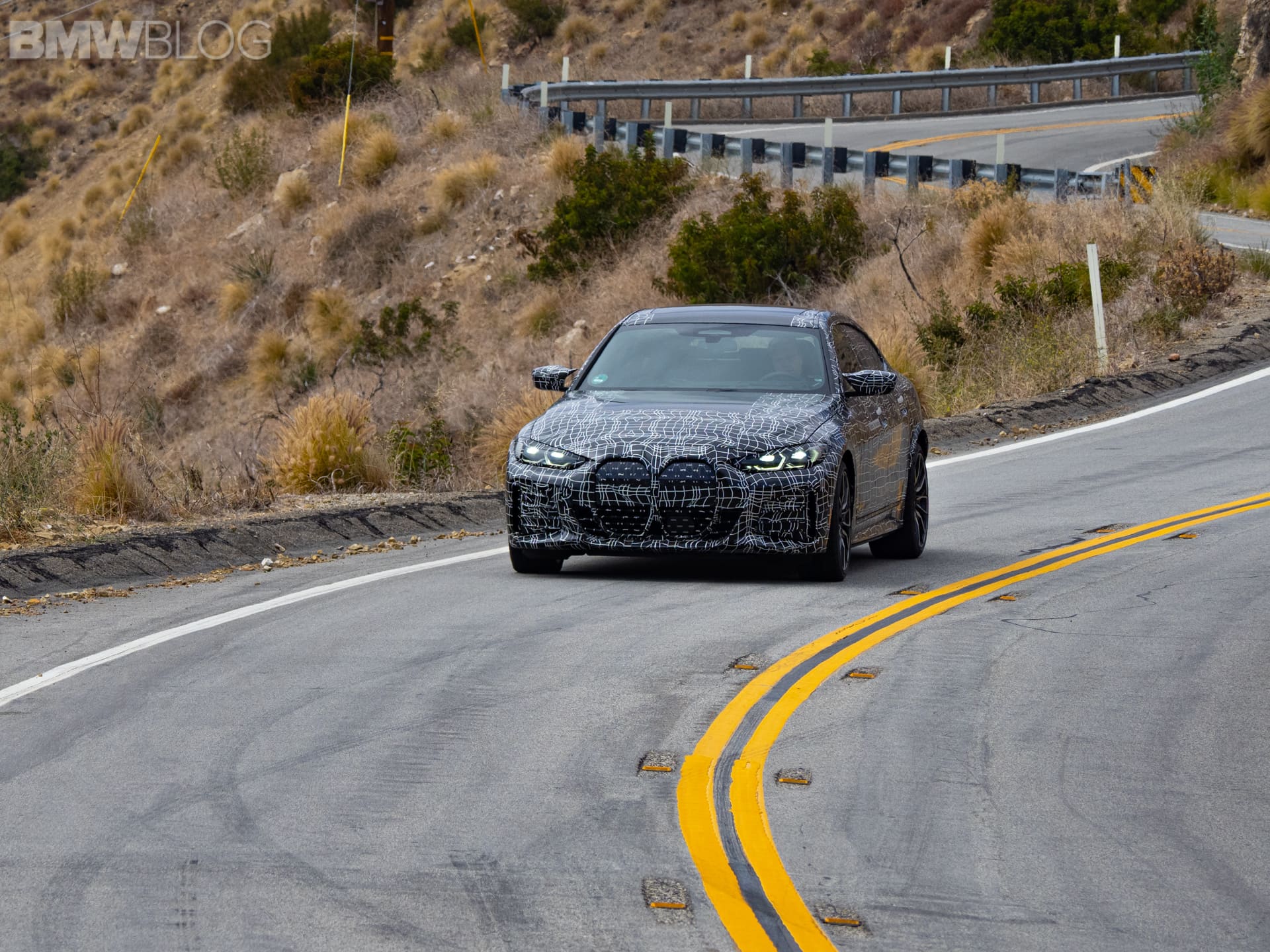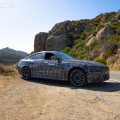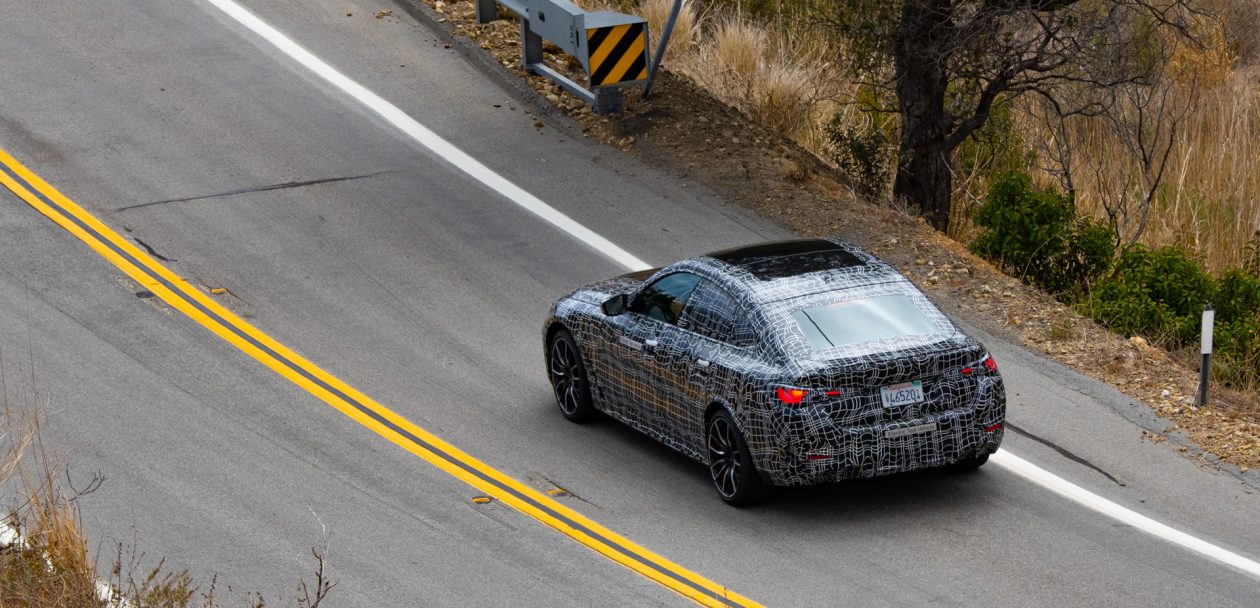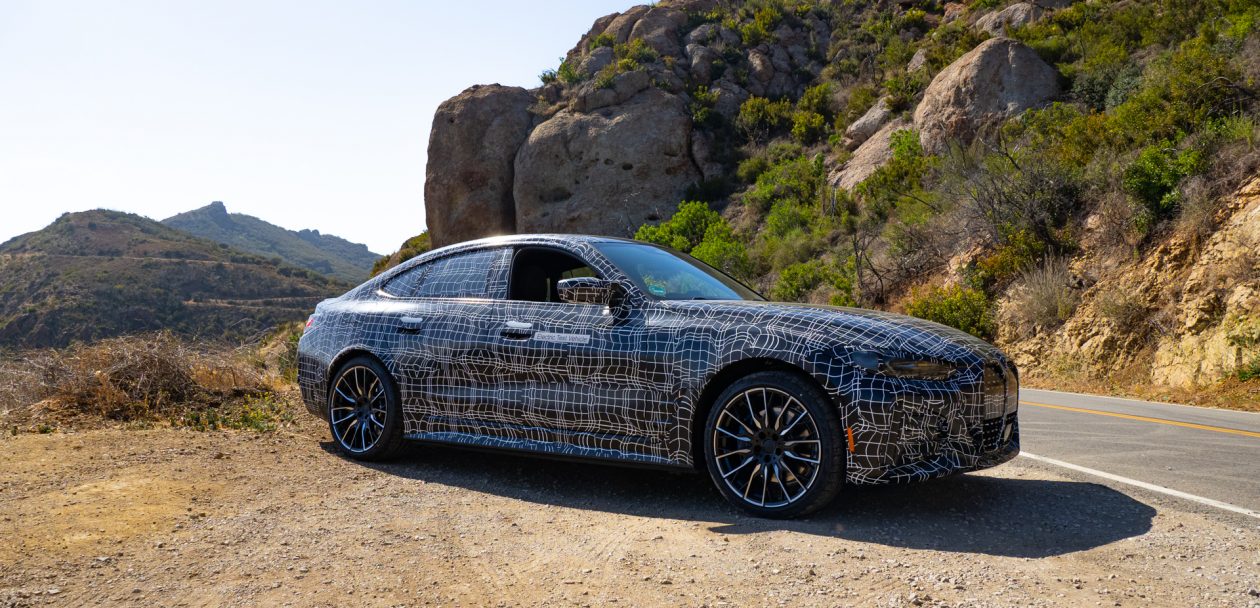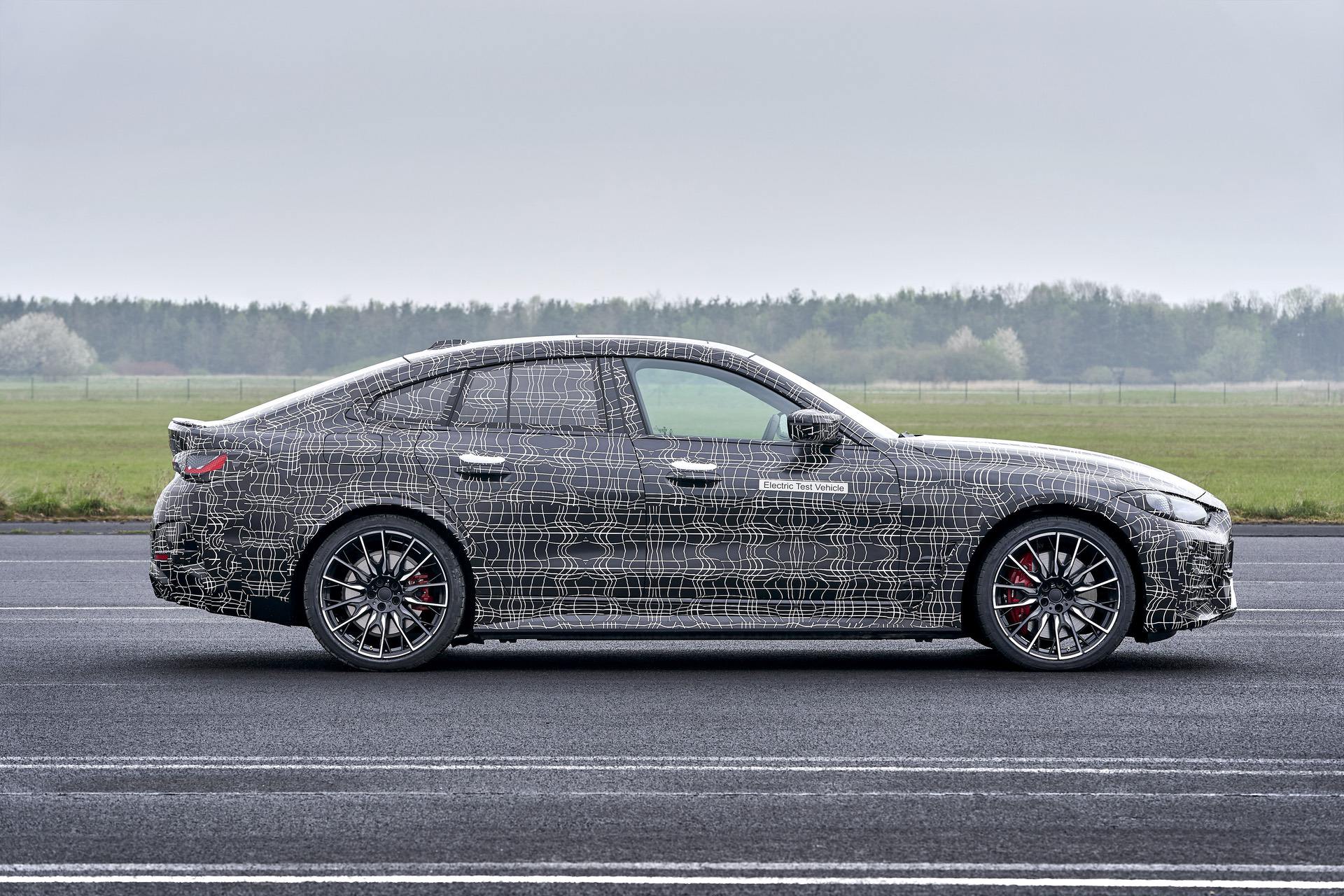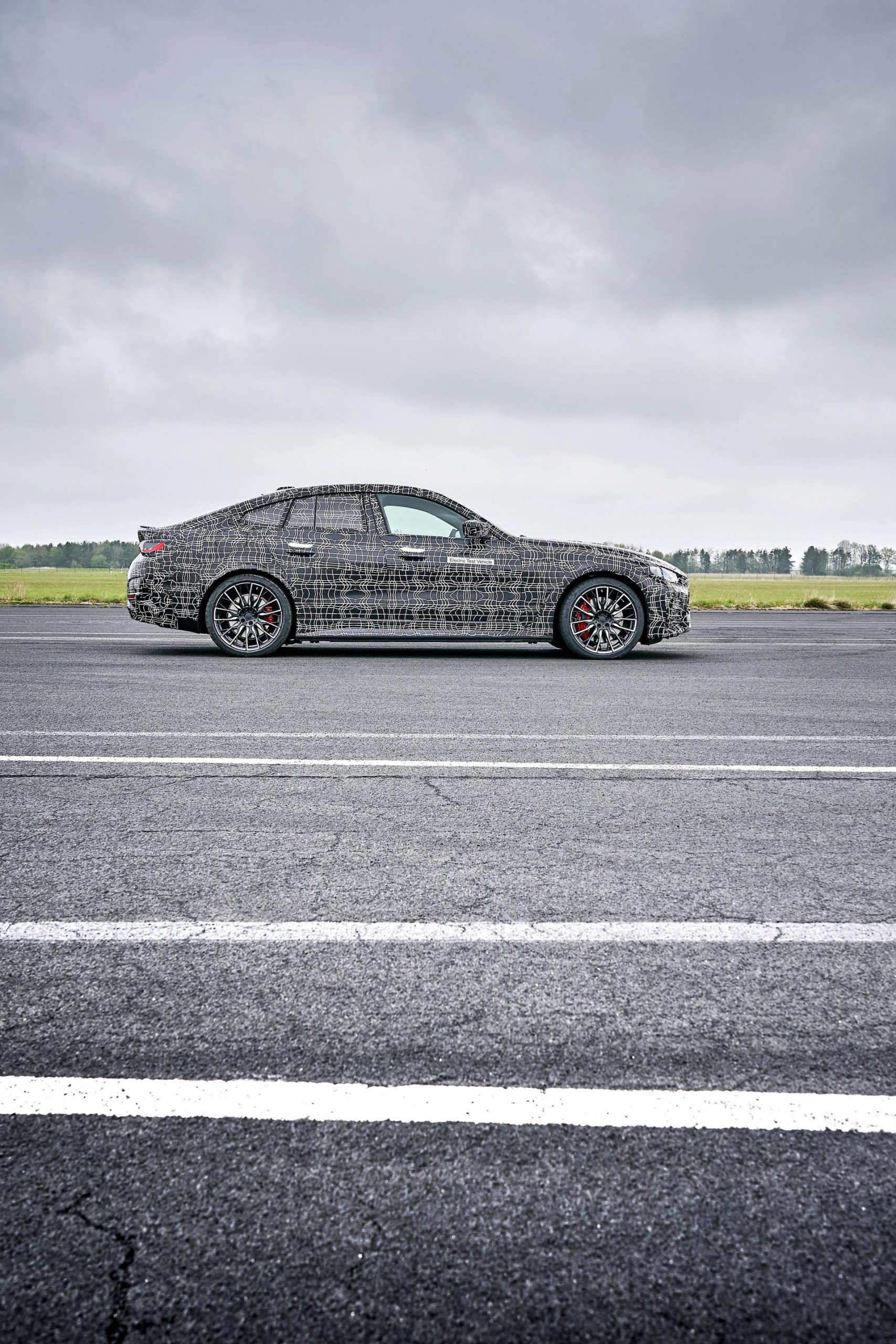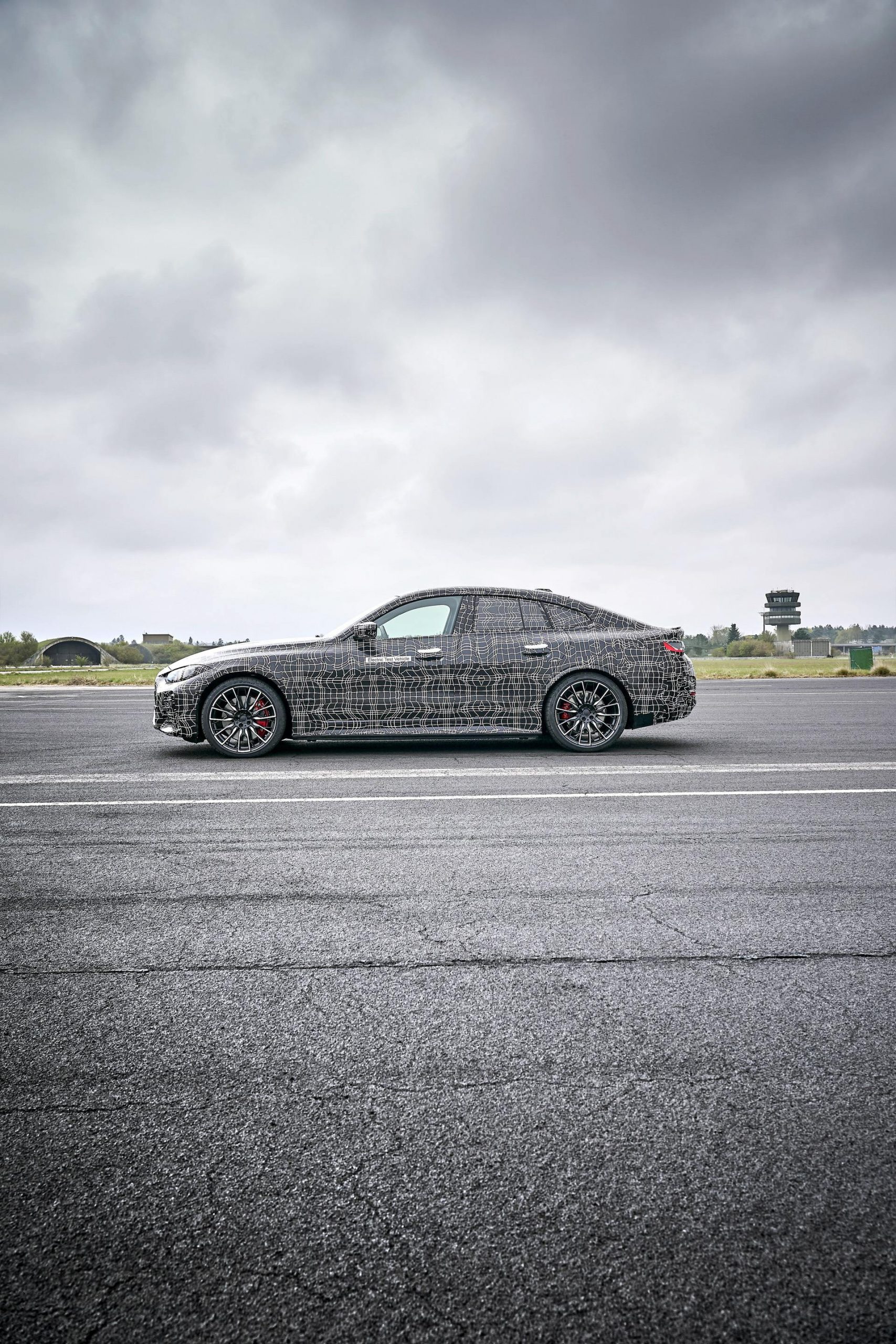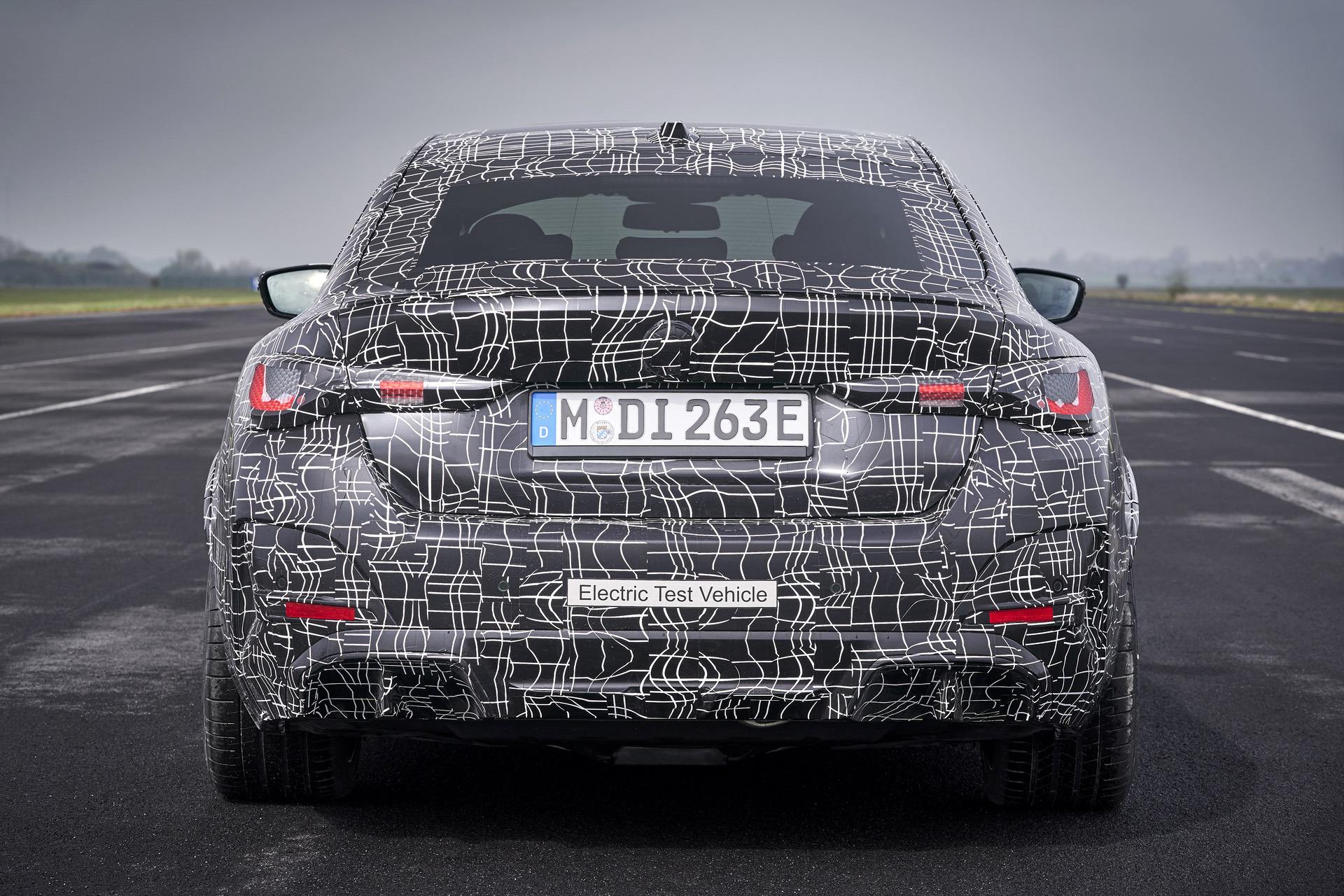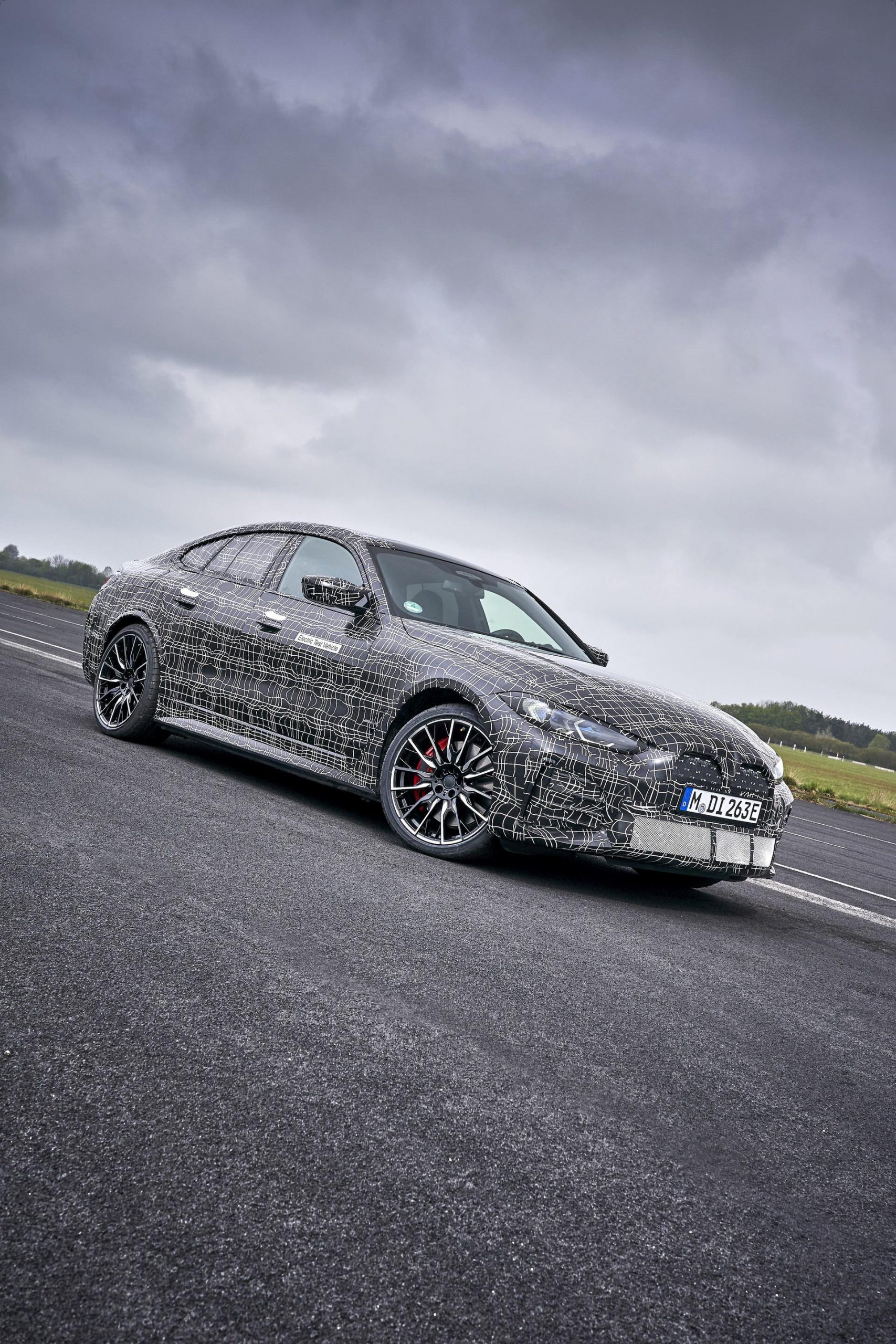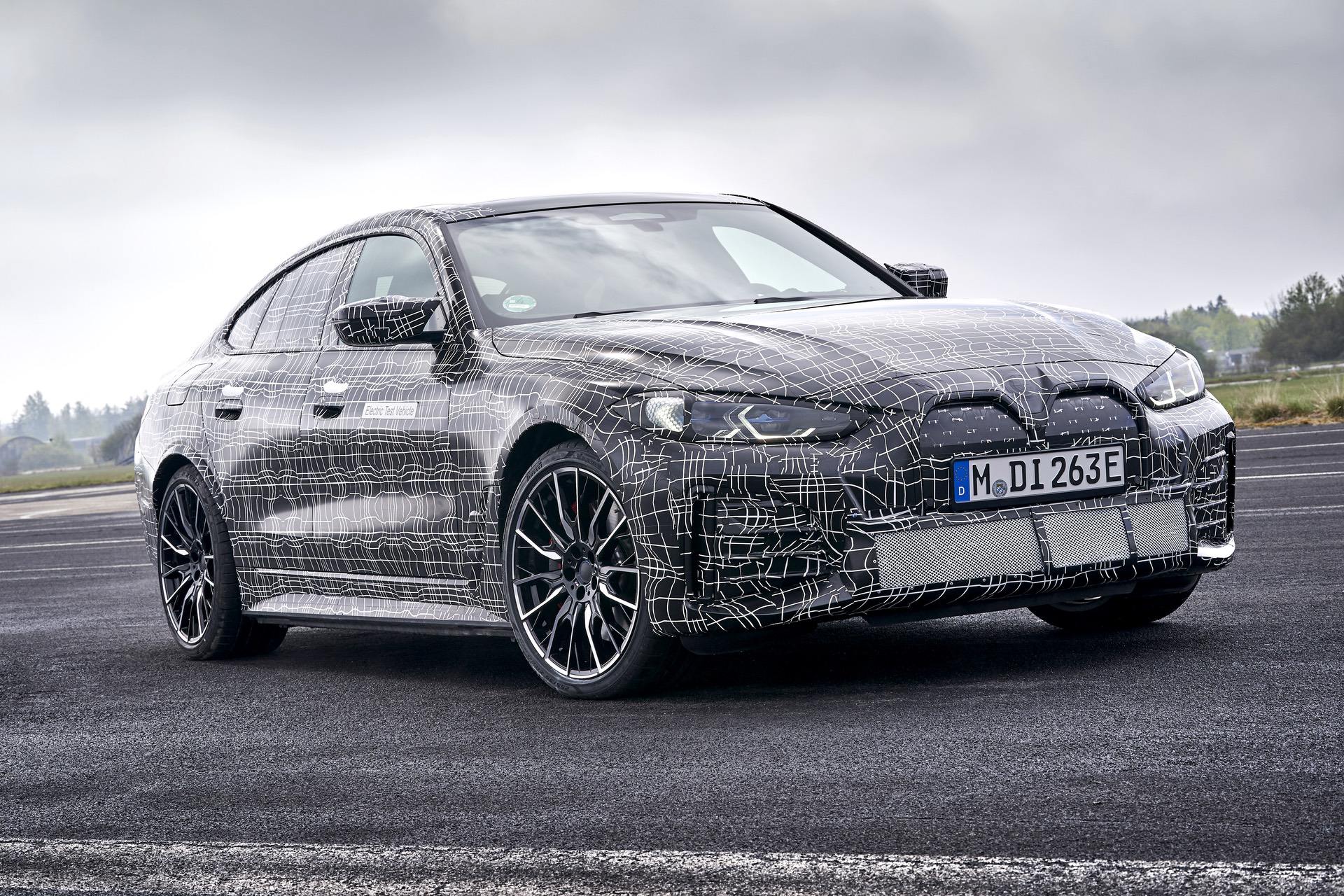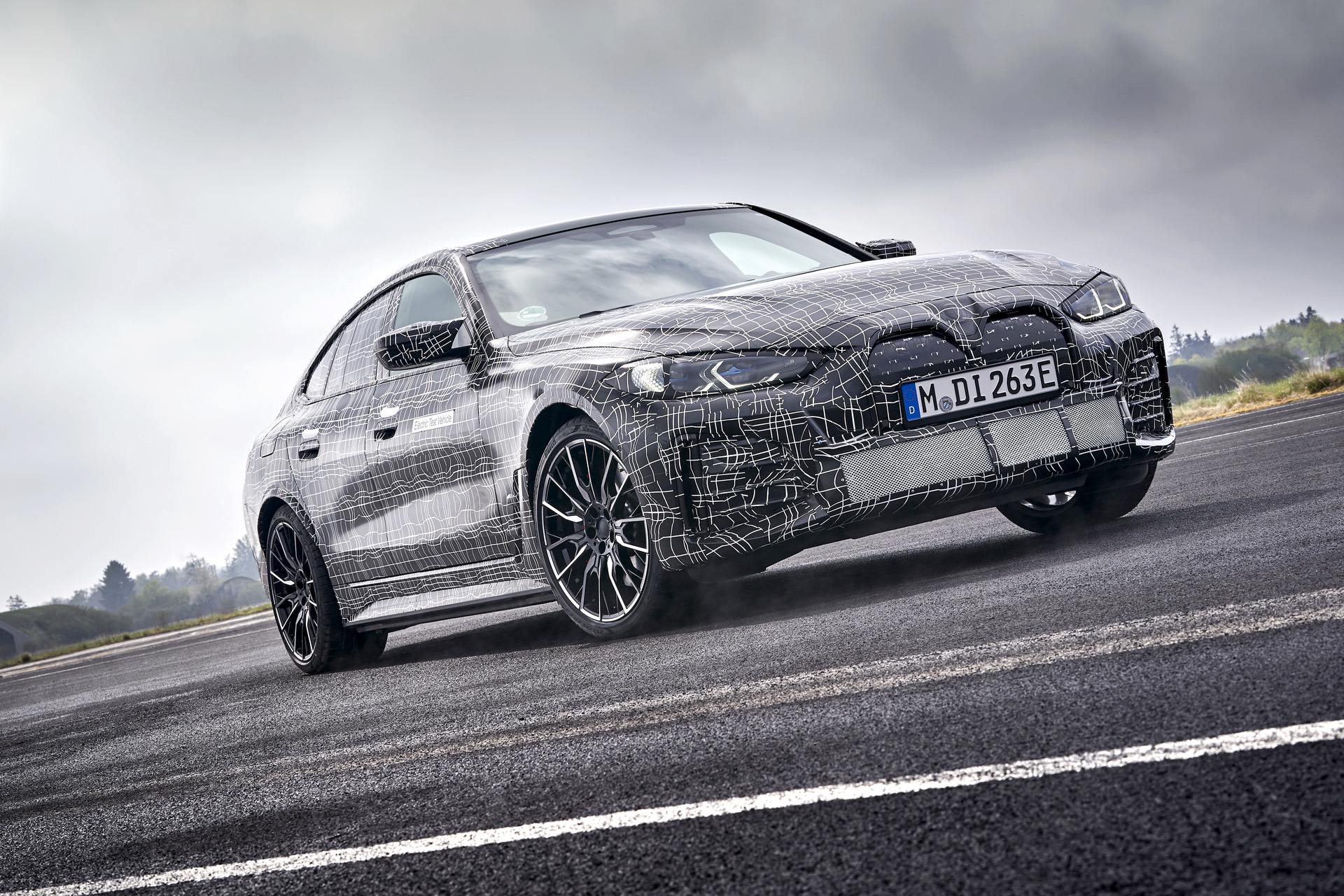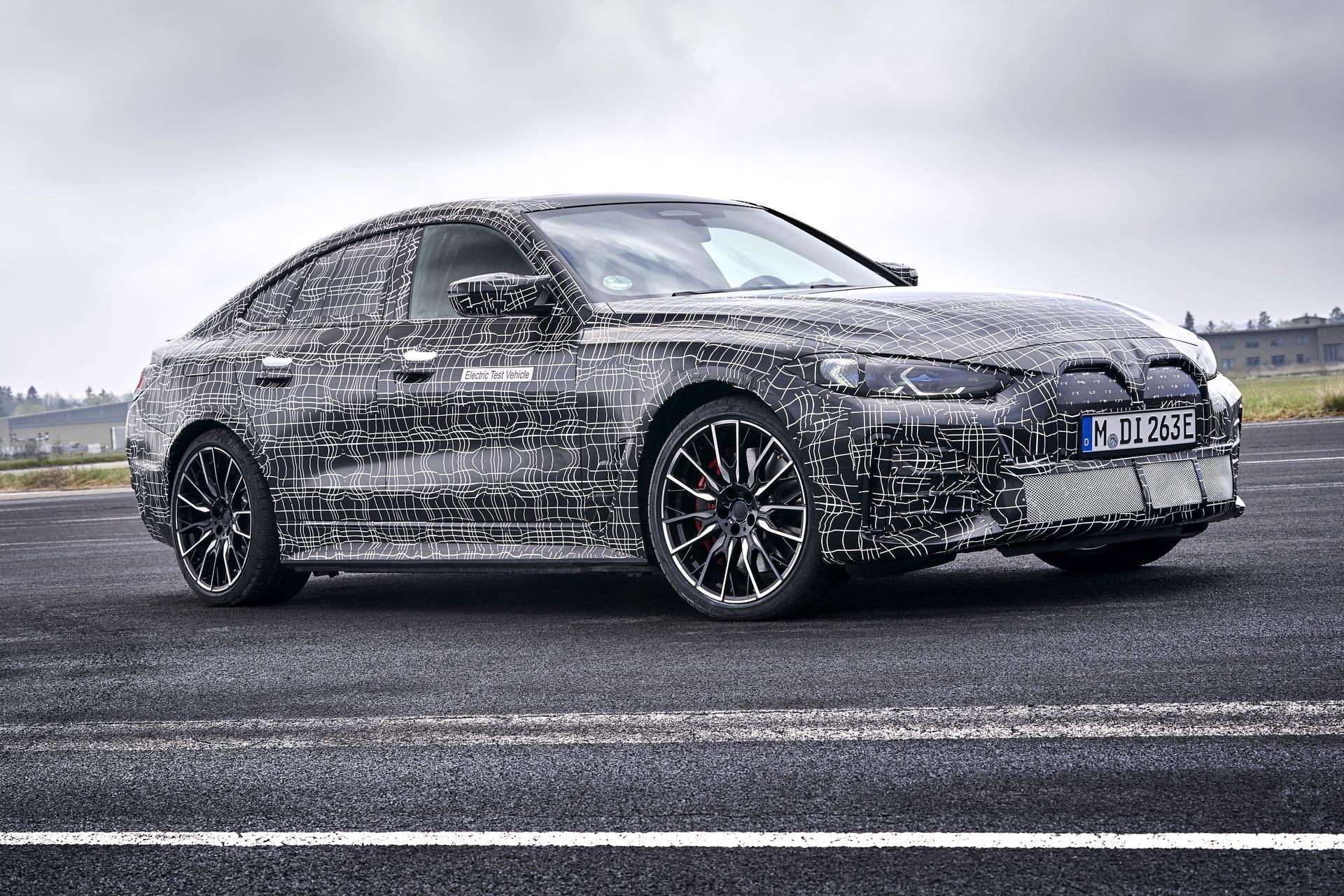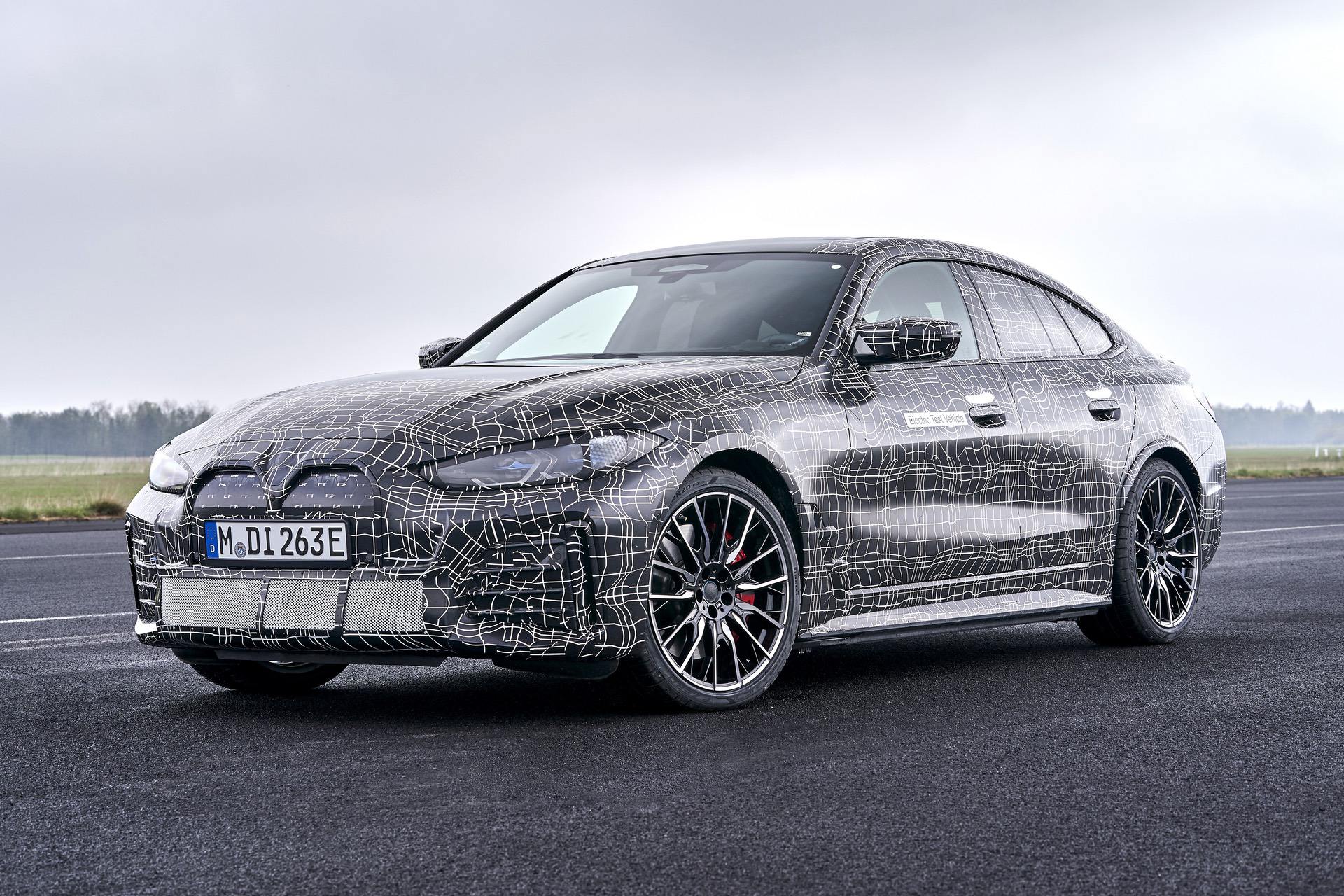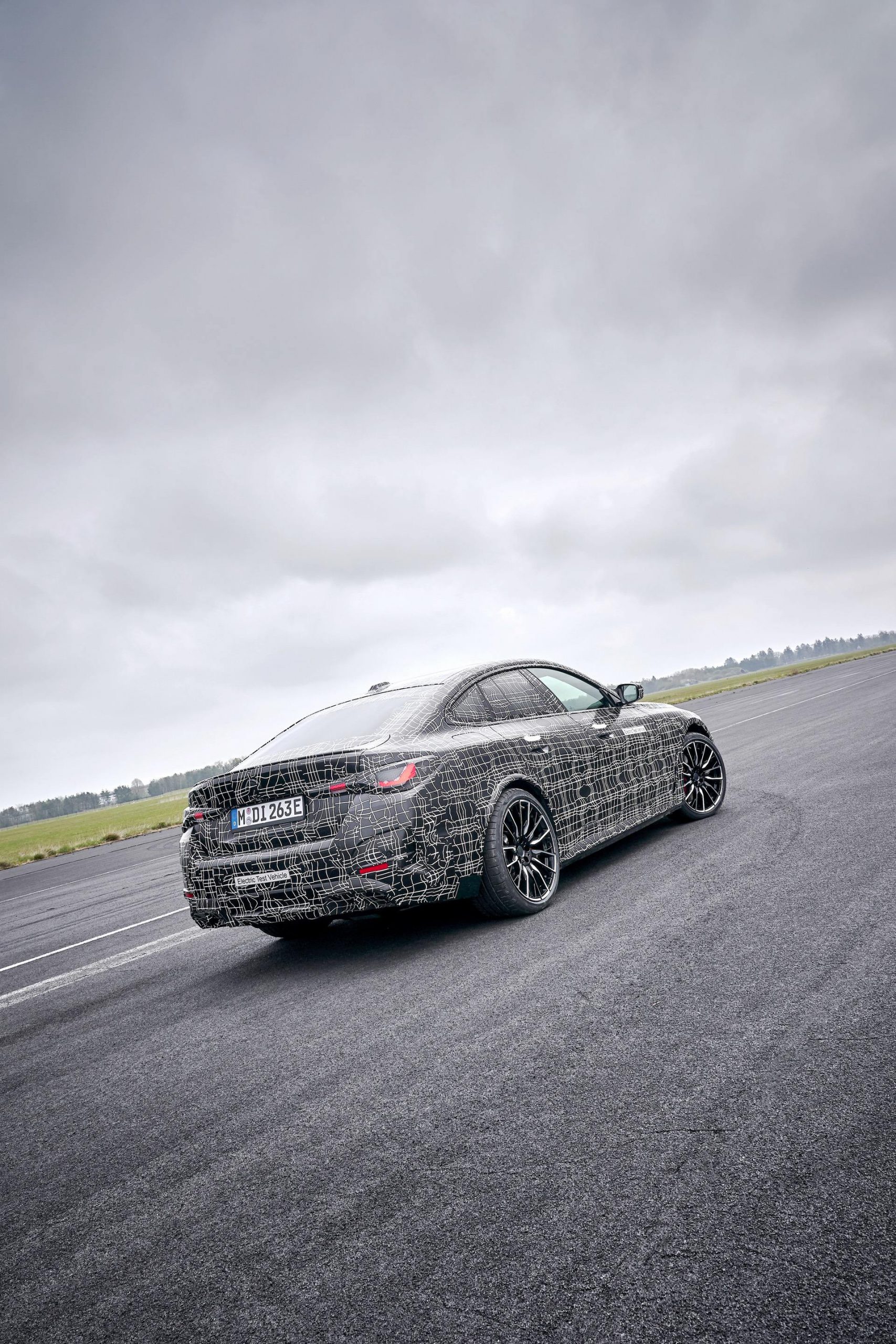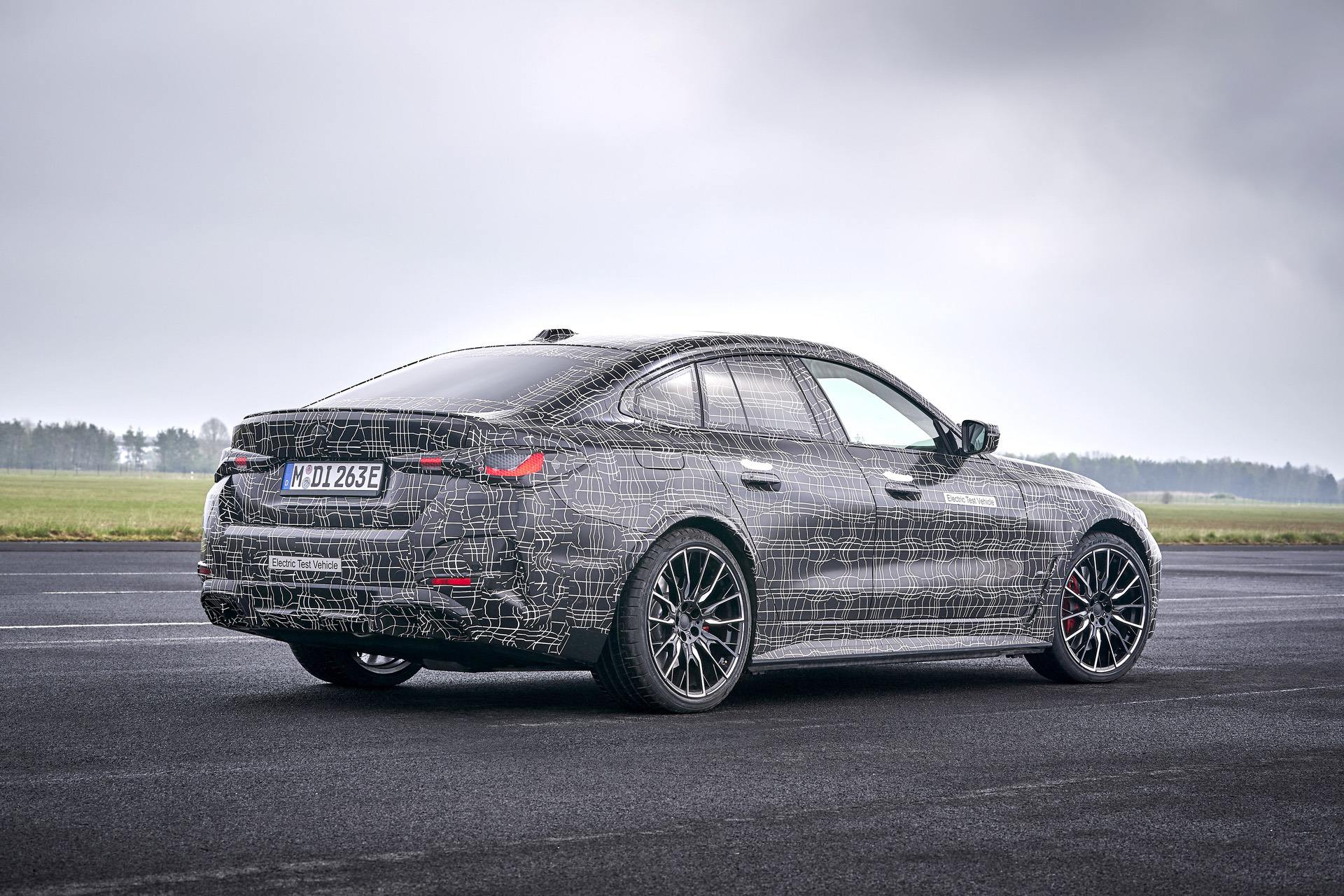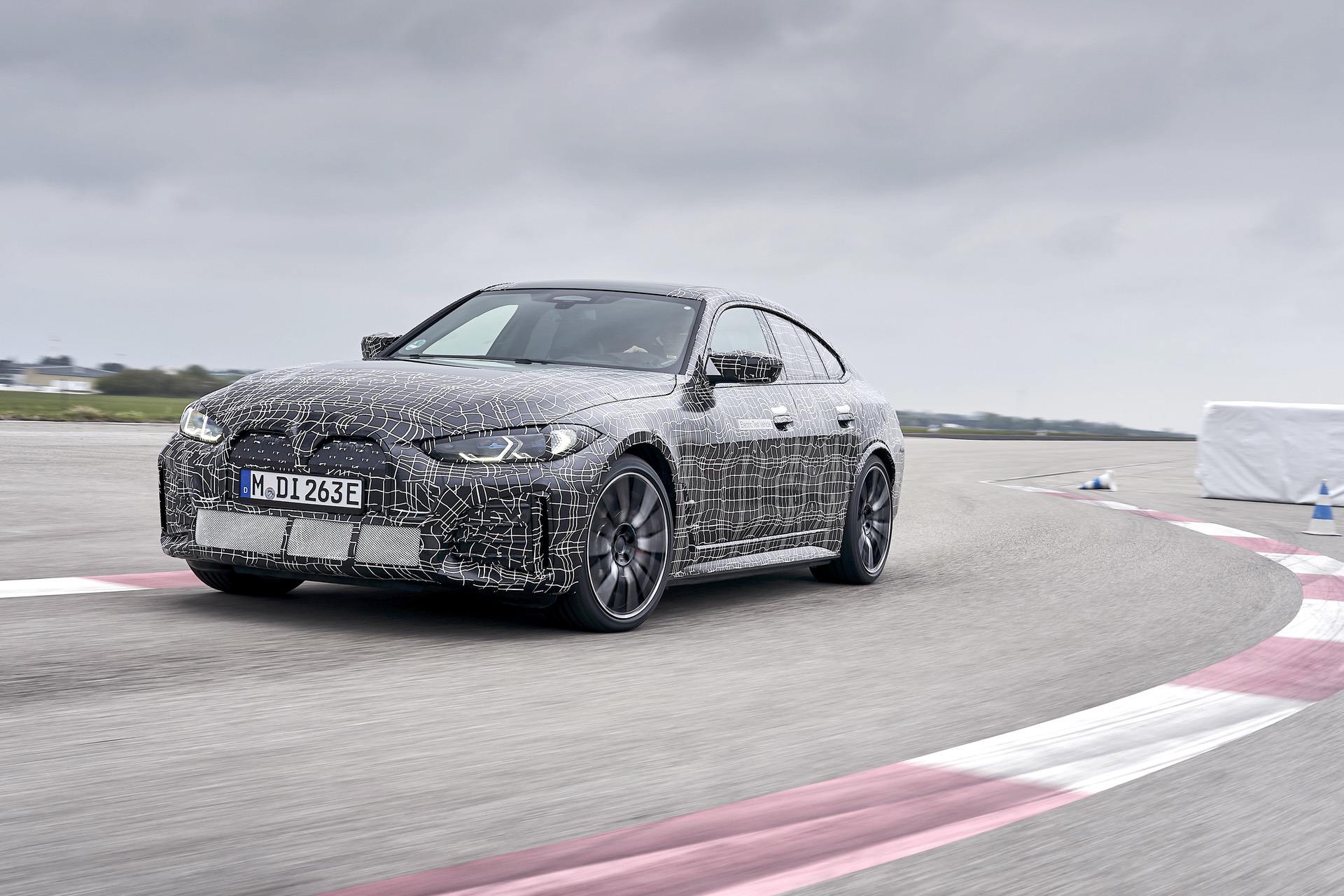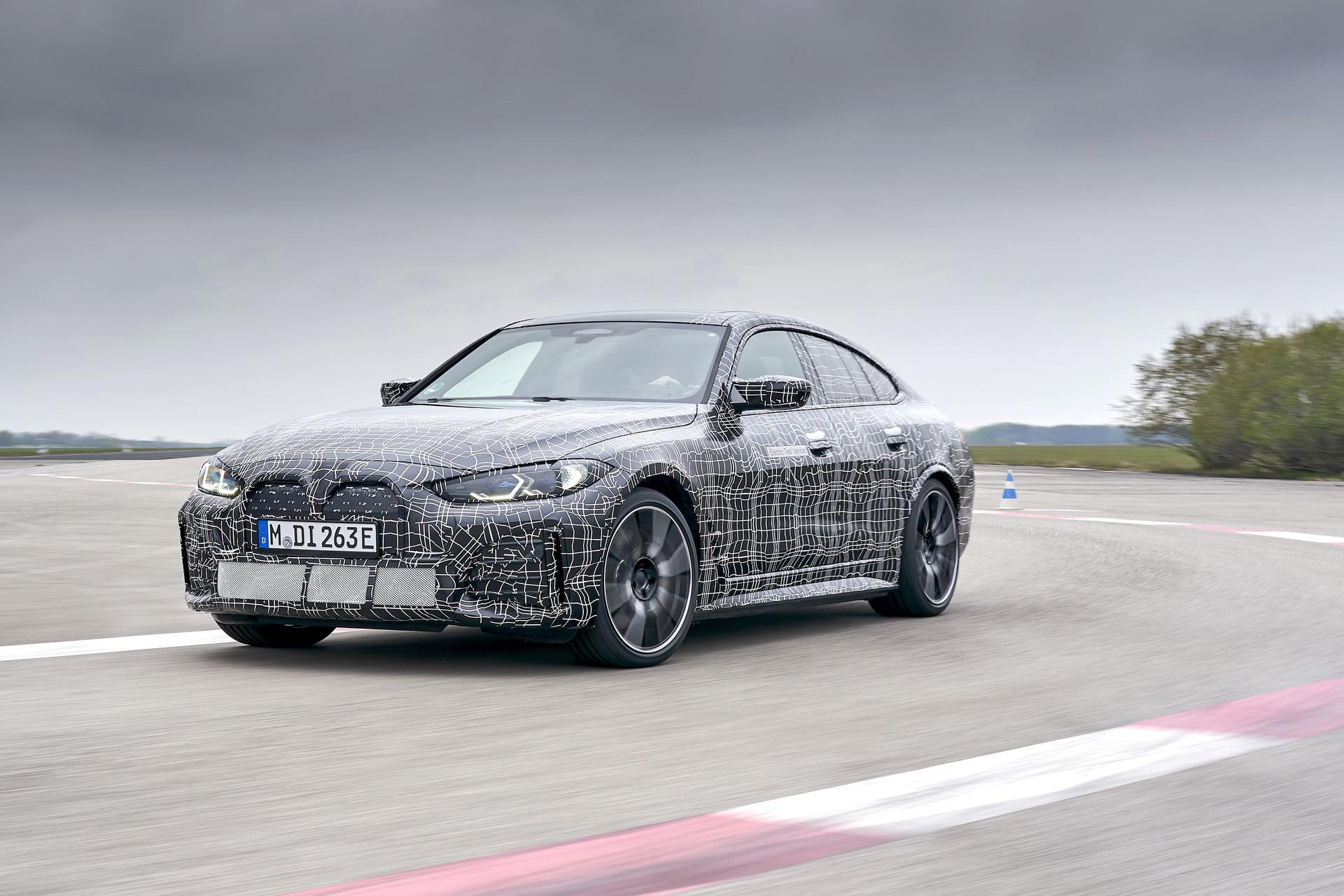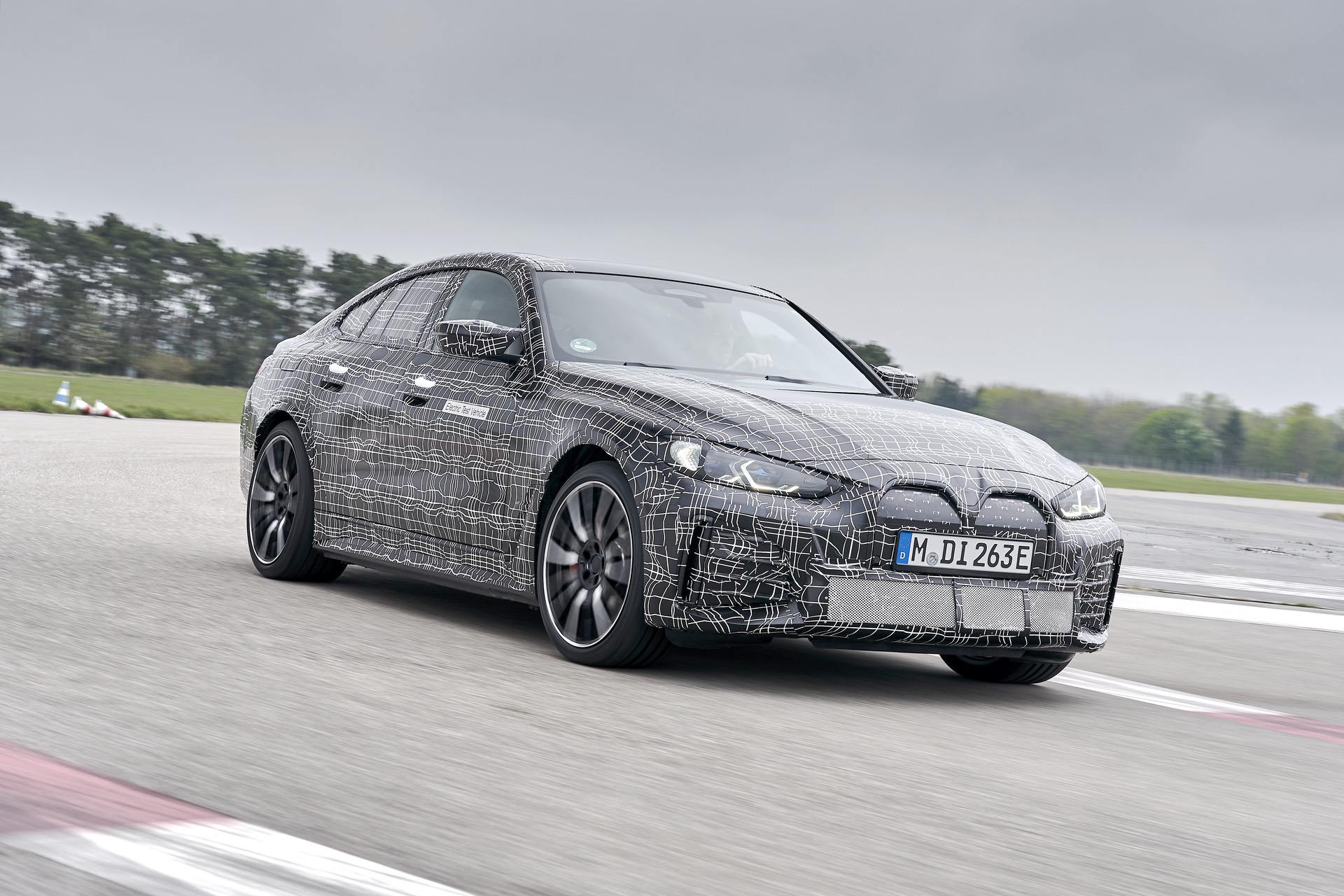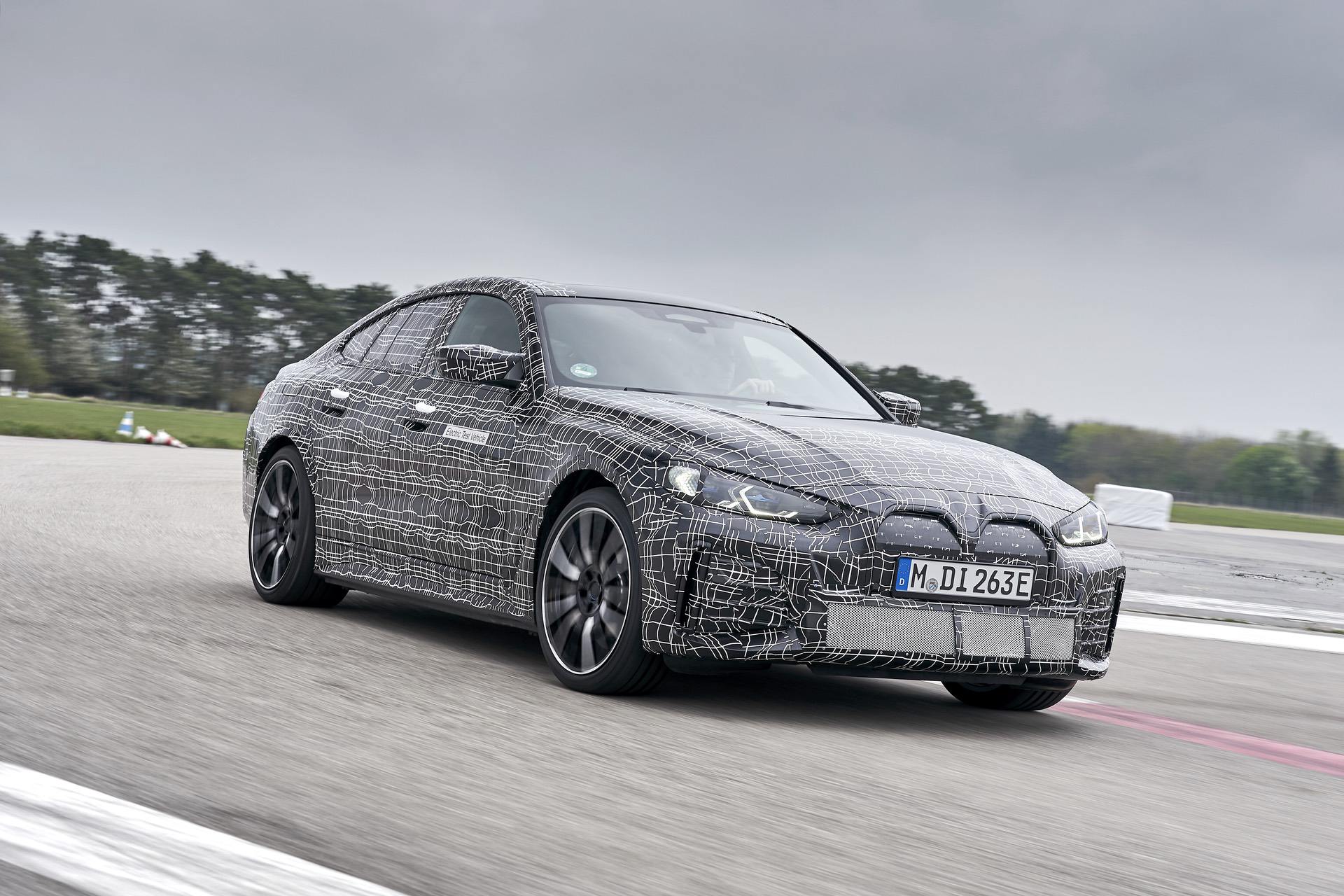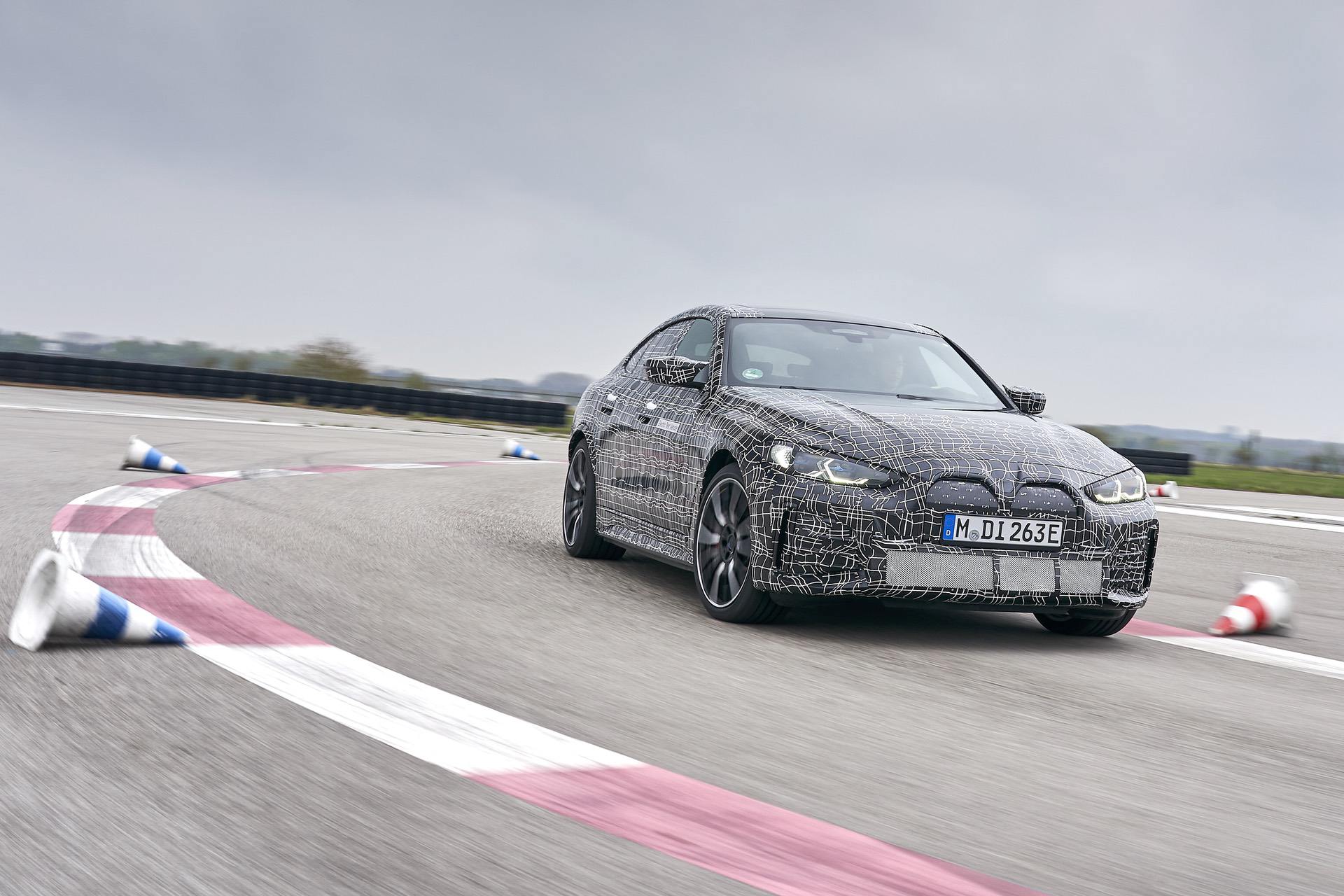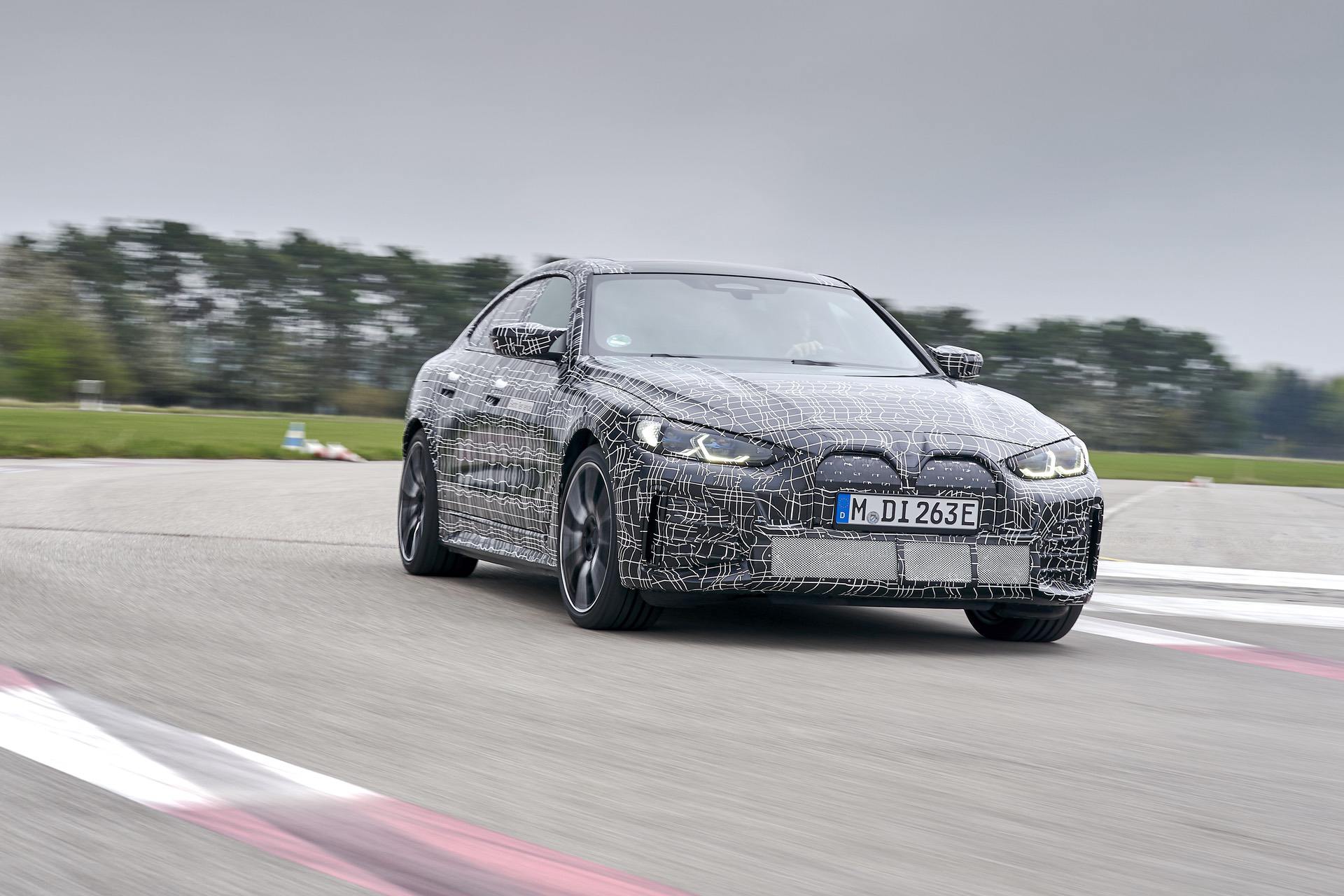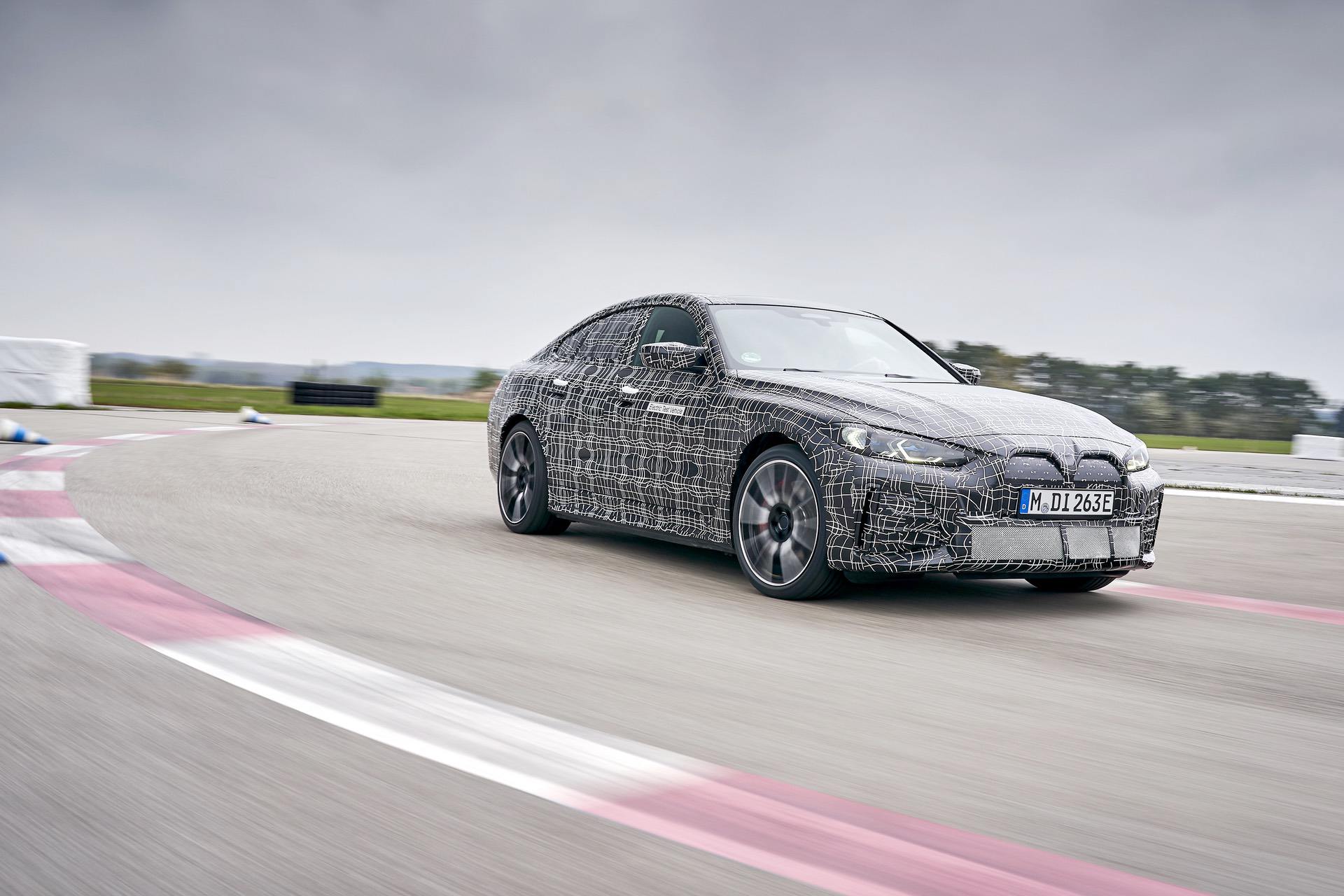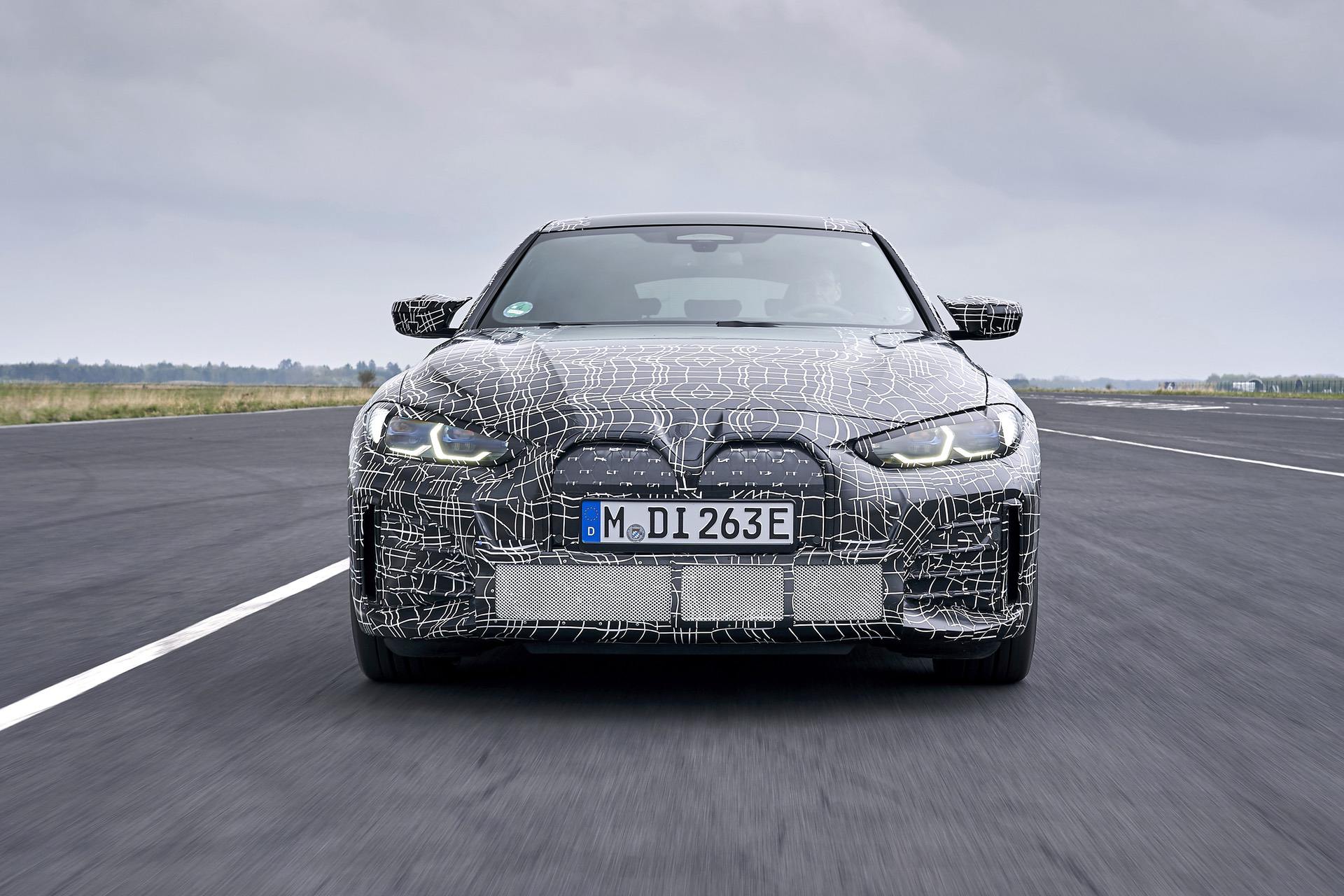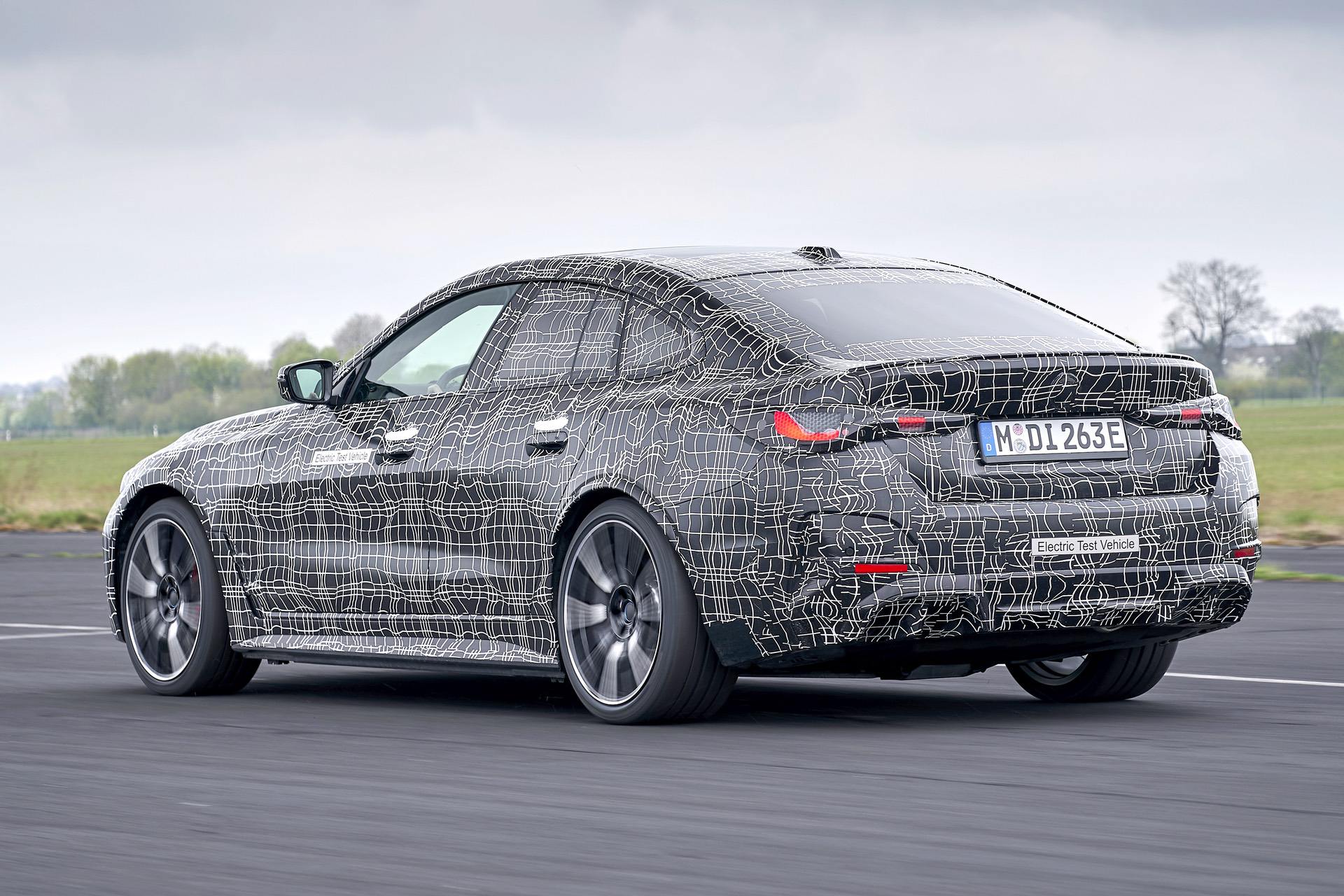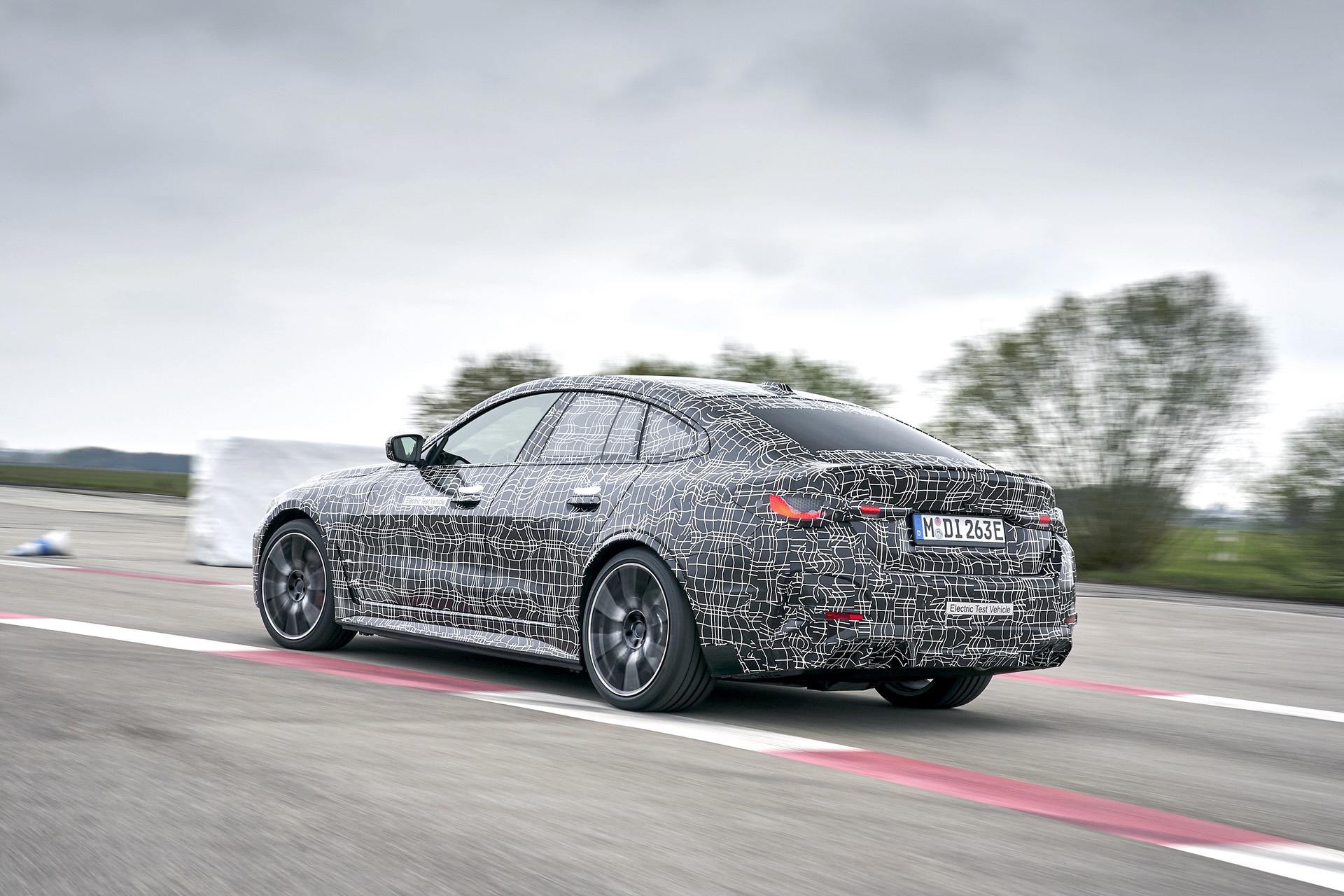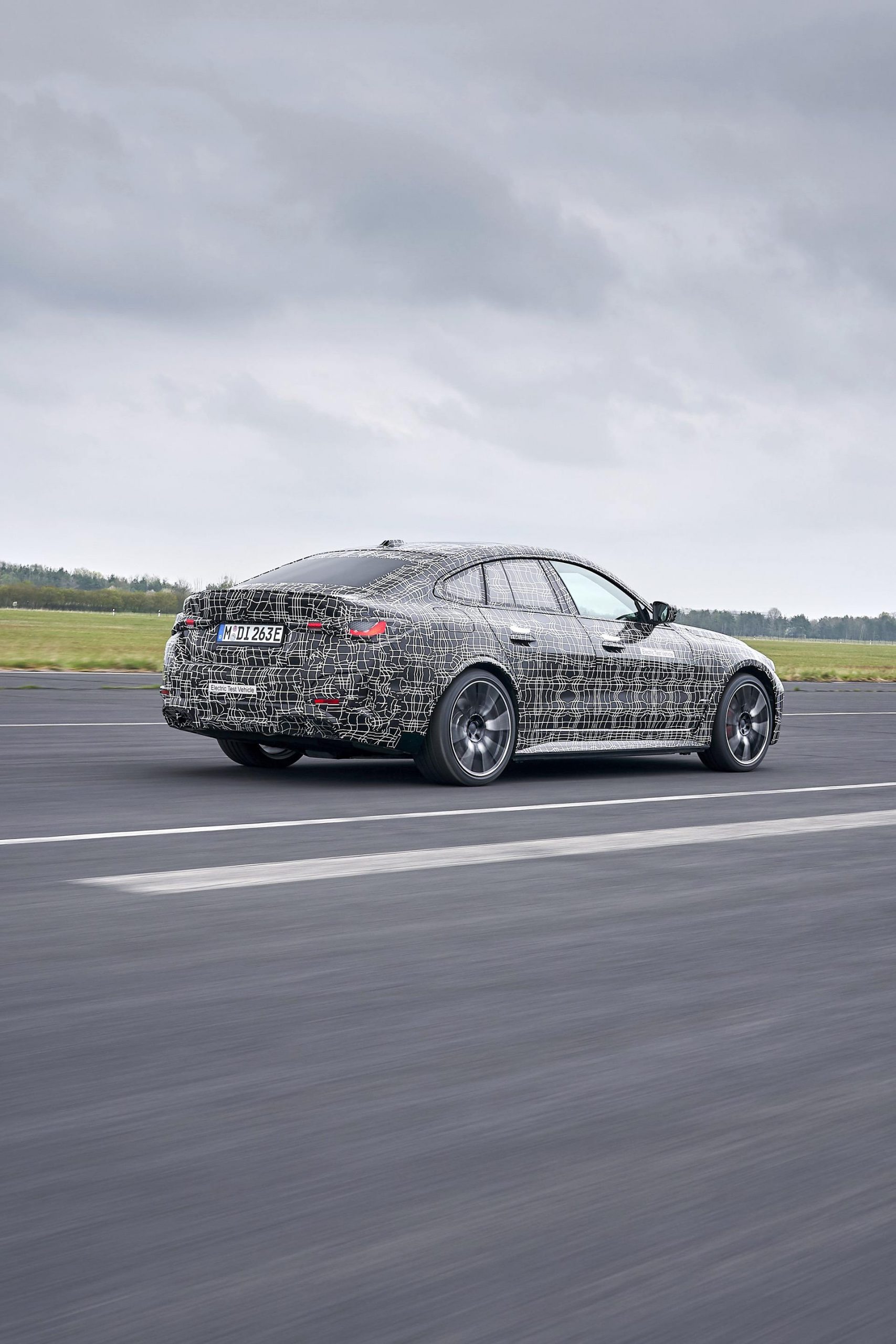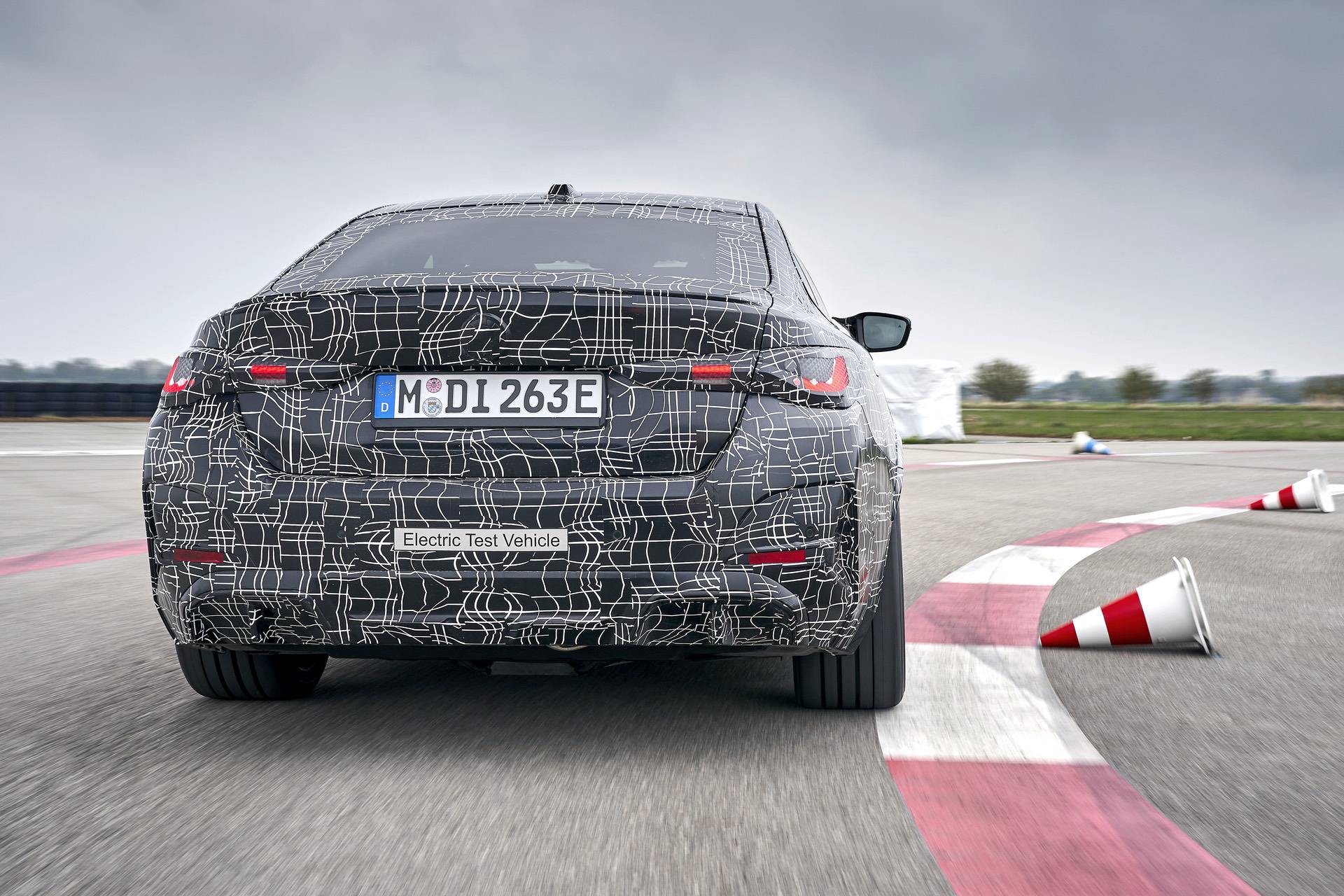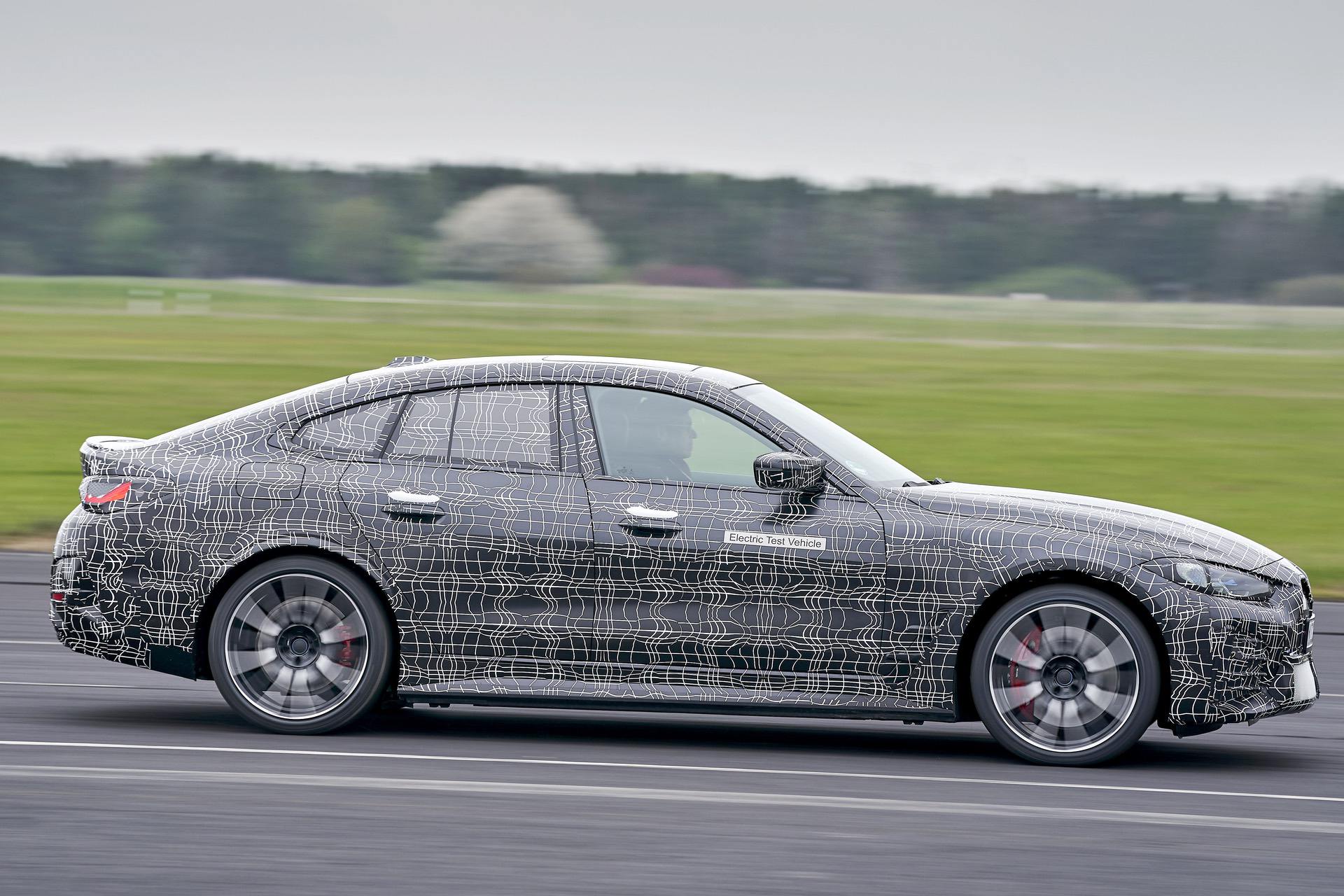Driving a prototype car is arguably one of the coolest things you can do as a car journalist. It’s also nerve wrecking if the car in question is the only one available in the United States. Yet, BMW felt confident enough to get me behind the wheel of a prototype (pre-production) version of their upcoming BMW i4 electric car.
It’s early May and traveling for the first time for a press event since COVID-19 pandemic changed our lives forever. Usually those prototype drives take place on BMW’s secret grounds – like the Miramas in France – but this time it’s Los Angeles who plays host. And that wasn’t a bad choice at all considering the nearly year-round great weather and especially the amazing driving roads surrounding the City of Angeles.
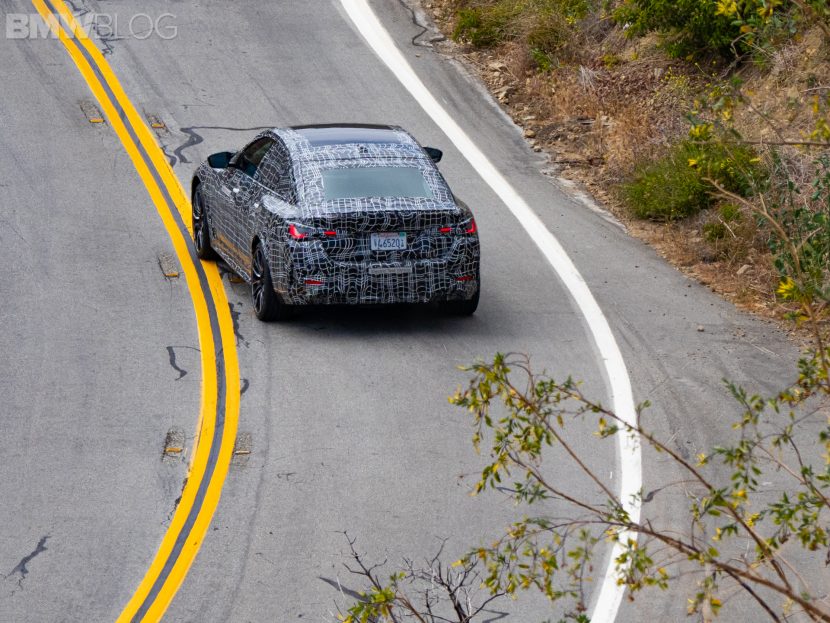
BMW has their own testing and engineering facility nearby, so we decided to start my day with the i4 in Malibu. I pull up in a BMW X3 M Competition- wonderful car btw – which really sits at the opposite spectrum of an electric car. But maybe this is just a preview of this exciting, yet scary future where the glorious sound of gasoline engines is replaced by “Iconic Sounds”.
Looks Like A 4 Series, But Sneaks Upon You
A BMW i4 covered in camo was already waiting for me which is quite strange considering how elusive those prototypes are where cameras are out. But this time around, the electric four-door gran coupe was there just for me. Of course, I immediately wanted to peel off that camo, but I was on my best behavior today and took off my “spy photographer” hat.
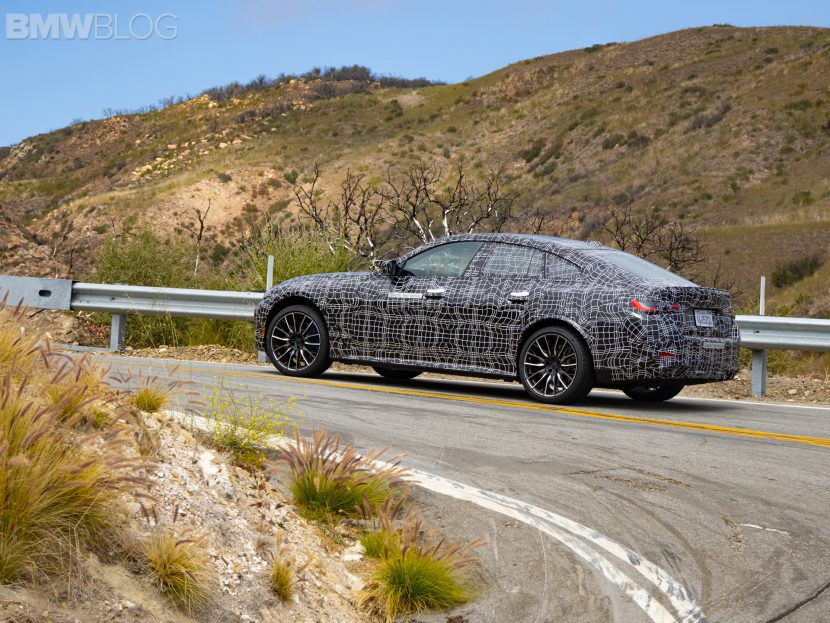
But that hasn’t refrained me from throrougly examining the proportions of the car. At a first glance, this is a quite long four-door coupe measuring 4.785 meters (188.3 inches) in length and sitting five people. The overall dimensions are 1,852 millimeters (72.9 inches) in width, 1,448 millimeters (57 inches) in height with a wheelbase of 2,856-millimeters (112.4 inches). It is exactly 13 millimeters (0.5 inches) wider than the 3 Series sedan and it has some really nice hips.
Thanks to the the high-voltage battery positioned low down in the vehicle floor, the center of gravity is quite low – 34 millimeters (1.3 inches) for BMW i4 M50 or 53 millimeters (2.1 inches) for BMW i4 eDrive40 lower than on a 3 Series Sedan. That gives the car a really dynamic stance and certainly a better driving experience. More on that soon.
First M-Tuned Electric Car
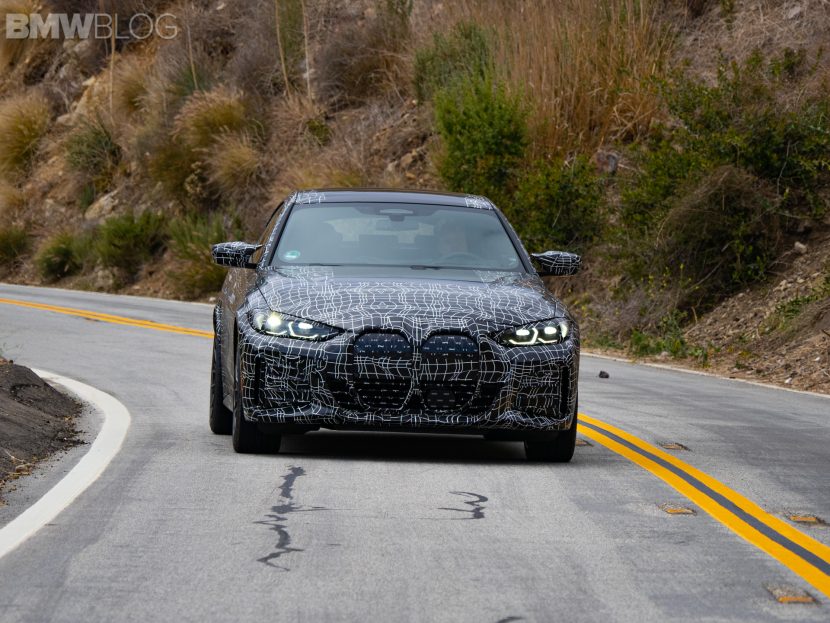
BMW was mum about the model being tested today, but it doesn’t take a genius to realize that this is the top of the line BMW i4 M50. At the front, behind the camo, I can easily spot the M Sport Package with a sporty styling and a nice lip. And if that wasn’t enough to point to the M50 model, then the M Sport Brakes and the rear M spoiler certainly did the trick. Both the front lip and rear spoiler seem to be made of carbon fiber.
The top BMW i4 model also comes with an all-wheel drive system featuring electric motors at both the front and rear axle with a combined maximum output of 400 kW/544 hp. Along with the near-actuator wheel slip limitation, the all-wheel drive system allows the i4 to shifts its power from the rear to all the wheels in order to achieve the perfect traction.
Largest Screens Ever In A BMW
Moving inside and immediately I’m greeted by another level of camouflage, this time covering most of the interior design, but fortunately not the new fully curved displays. The new display merges the instrument cluster and central control display screens into a single-piece. Of course, in typical BMW fashion, it is angled towards the driver. The left most screen measures 12.3-inch while the right one is the largest ever in a BMW – 14.9-inch. Naturally, BMW’s iDrive 8 Operating System is powering these high-definition screens.
The center console still features non-production materials and trims, but it’s fair to say that the i4’s interior won’t be significantly different from the “regular” 4 Series Gran Coupe models. The BMW i4 is also fitted as standard with sport seats and a sports steering wheel with multifunction buttons. I can also report that the steering wheel features the heated function.
BMW says that the car has a model-specific gearshift lever. To continue with the electric nature of the car, blue accents are present around on the Start/Stop, steering wheel and gearshift lever.
Thanks to the elongated body of a gran coupe, there is adequate space for three adults in the rear seats. All the seats can be folded to offer additional cargo space in the boot.
All New Battery Tech And Drivetrain
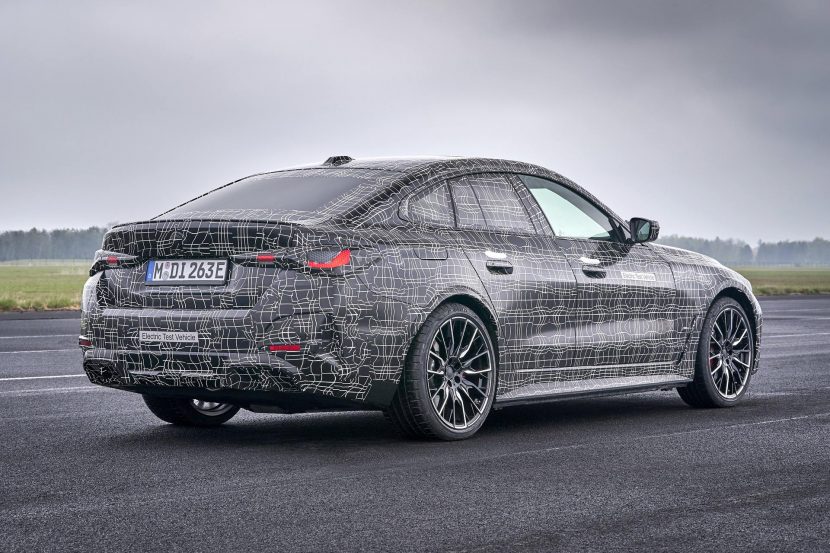
And now the moment has finally come. I am one of the few people in the world who will get to drive the new BMW i4 before its official launch. Being a fourth-time BMW i3 owner, my familiarity with electric vehicles is quite extensive. Brake regeneration, one pedal driving, instant torque and other electric gimmicks should feel familiar.
But boy was I wrong…This BMW i4 feels nothing like the carbon fiber-manufactured i3. From the moment I leave the parking lot, I can tell that this is a very special electric car. The power is immediately noticeable, even though BMW was extremely secretive at the time about the final power output. There weren’t many technical details that I learned “on the job”, but I can now share some based on the press release.
Both models – BMW i4 eDrive40 and i4 M50 – use the same battery pack which has a capacity of 83.9 kWh but a net energy of 81.1 kWh. The battery can be charged with a DC Fast Charger up to 200 kW, while a Level 2 station will charge the car at 11kW. From empty to full, it takes about 8 hours to charge the i4 on Level 2. DC is significantly faster, as you’d expect. 102 miles of range in 10 minutes for the i4 eDrive40 and 87 miles for the i4 M50.
Driving Range And Horsepower

So what’s the range, you might ask. BMW says that all EPA data is preliminary, but the one number often cited is 300 miles. Yet, that comes with a caveat. It only applies to the BMW i4 eDrive40e. The more powerful i4 M50 has a preliminary EPA of 245 miles per full charge. So why the range discrepancy between the two models?
It all has to do with power output and weight. The BMW i4 eDrive40 – the entry level model for now – is rear-wheel driven with 335 horsepower and 430 Nm (317 lb-ft) of torque from a single rear motor. The i4 M50 is significantly more powerful – and likely more fun to drive – with 536 horsepower and 586 lb-ft of torque. The motor driving the rear wheels generates maximum output of 230 kW/313 hp, while the unit at the front axle produces 190 kW/258 hp. A Sport Boost function increases the system’s combined drive power by 50 kW/68 hp to its maximum of 400 kW/544 hp for over ten seconds. At the same time, combined torque is upped by 65 Nm (48 lb-ft) to 795 Nm (586 lb-ft).
That makes it significantly more powerful than the new M3/M4 Competition model. And that shows on the road as well.
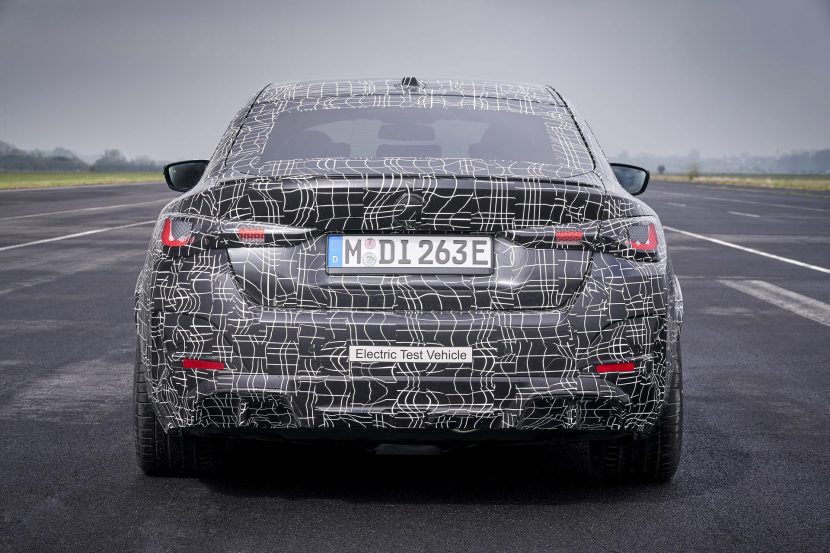
Further differentiation between the two models comes from the top speed also: 118 mph for the entry model and 140 mph for the M-tuned i4. The standard sprint is also measured at 5.7 seconds and 3.9 seconds, respectively. My impression after driving the i4 M50 is that the figure is quite conservative and without a doubt it can drop a few more tenths of a second.
The top models also tops the eDrive40 – pun intended – in the area of brake regeneration. The integrated brake system and Brake Energy Regeneration is rated at 116 kW for the base model and 195 kW for the M Performance car. Both cars feature a rear air-suspension but the Adaptive M Suspension is only available for the M50.
Driving Experience
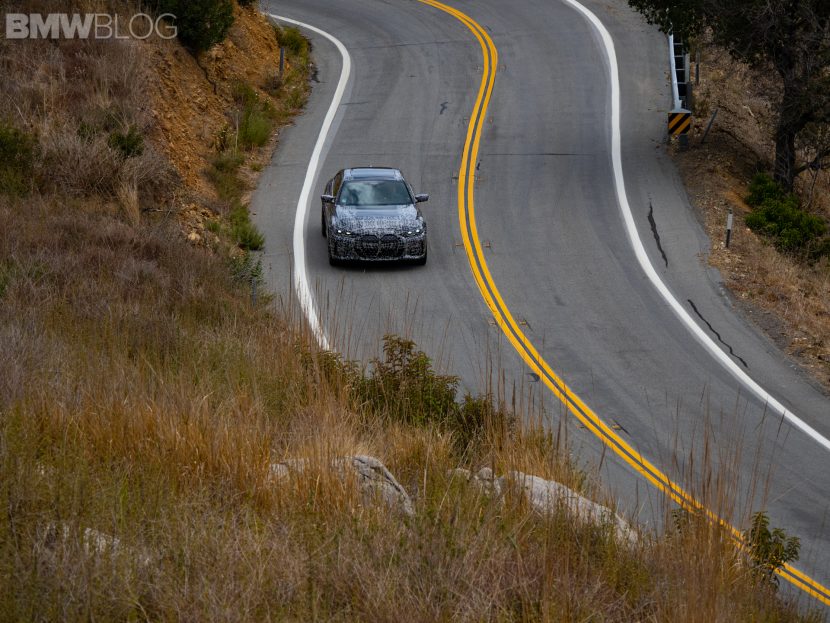
The lead car is a BMW M2 Competition, one of the most nimble and fun to drive sports coupes today. This is also a car that shines on curvy road and tight corners, and that’s exactly where we’re heading today. A quick left turn of the Pacific Coast Highway and we’re heading up the hills surrounding Malibu for some spirited driving. Just like most new BMWs, the i4 comes with three different driving modes: ECO PRO, COMFORT and SPORT.
In ECO, everything is set to have the lowest consumption of energy and longest range. COMFORT is what you’d use in normal driving. In SPORT, you have a more direct steering and pedal feel, the chassis setup is stiffer and more responsive. You can, of course, configure each mode through the comprehensive iDrive 8 system.
The drive kicked off in COMFORT so I can experience the car as a customer would do in a daily commute for example. The suspension is a bit more relaxed, yet the car is still extremely composed on the road and especially through corners. The power delivery is nearly instant and neck-snapping, and even though the BMW engineer refrained from confirming the M50 badge on the car, I immediately knew this is the 500+ hp version.

Also, the i4 is nothing like the i3 hatchback. Not that I expected it to be. They are built for different purposes and there is a significant tech difference between the two. But one thing is certain: they’re both fun to toss around, but the i4 is at a different level. The car is extremely well balanced, the low center of gravity keeps the weight in check through corners while quickly accelerating once passed the “apex.”
This BMW i4 can easily keep up with the M2 Competition in front of me and it’s just as good on those endless tight corners. It made me wonder what an M2 or M4 all-electric can do. One thing was immediately clear: electric cars don’t have to be just about range and charging, they can certainly differentiate among themselves with a unique driving experience. And when it comes to that, the Ultimate Driving Machine slogan will likely live on. Sans the exhaust noise and pollution.

Next on my test list was the SPORT mode. Just like in combustion-powered BMWs, the steering wheel immediately tightens and becomes more responsive, the “gas pedal” is also twitchier while the suspension setup firms up. Now I can push this BMW i4 M50 even more. I’m becoming more confident in the car’s capabilities so I cut through every corner a bit sharper and faster, with late braking. The goal here? To see if it understeers or oversteers.
But to my surprise, the i4 is planted on the road, feeling extremely grippy and following proper steering inputs. It is an absolute blast putting a huge grin on my face. And that hasn’t happened in a minute. The instant torque is addictive and the drive is effortless. You can certainly be a fast driver with the i4, even though your track experience might be limited.
I’m not sure how much different the rear-wheel drive i4 eDrive40 will feel on the road, but the electric all-wheel drive is quite addictive.
A Sophisticated Brake Energy Regeneration System
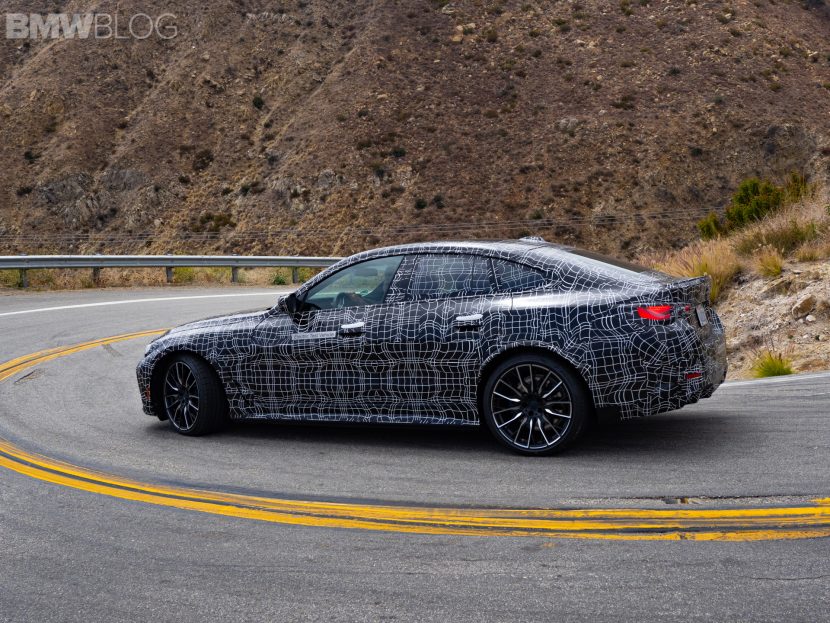
Brake regeneration comes up next on my list of things to try out. While the BMW i3 had a single brake-regen mode, the new i4 comes with no less than four options. The idea here is that you can still get the one pedal feeling. but if you want to drive longer distances, maybe you want to have more comfort. This is why you can choose the amount of recuperation in the i4.
You have three levels and one adaptive mode. You can change from the one-pedal feeling to coasting where you have no recuperation. And you have a mode in between. If you don’t care about switching the modes, there is an adaptive mode which does the work for you. For instance, if you drive behind another car and get closer, the i4 will start to recuperate. But if you don’t have anyone in front of you, the i4 coasts so you don’t lose energy in recuperation.
In braking situations, the first thing the car does is to recuperate energy. But if you need additional braking force, only then it will use the mechanical brakes. So during my drive I played around with all these modes. During more “technical” sections of these backroads, I mostly used the High mode which did most of the braking for me which was quite a unique experience considering the braking power needed. At the other end of the spectrum is the Low regen-mode which feels like you’re driving a “normal” BMW where you need to do all the braking.
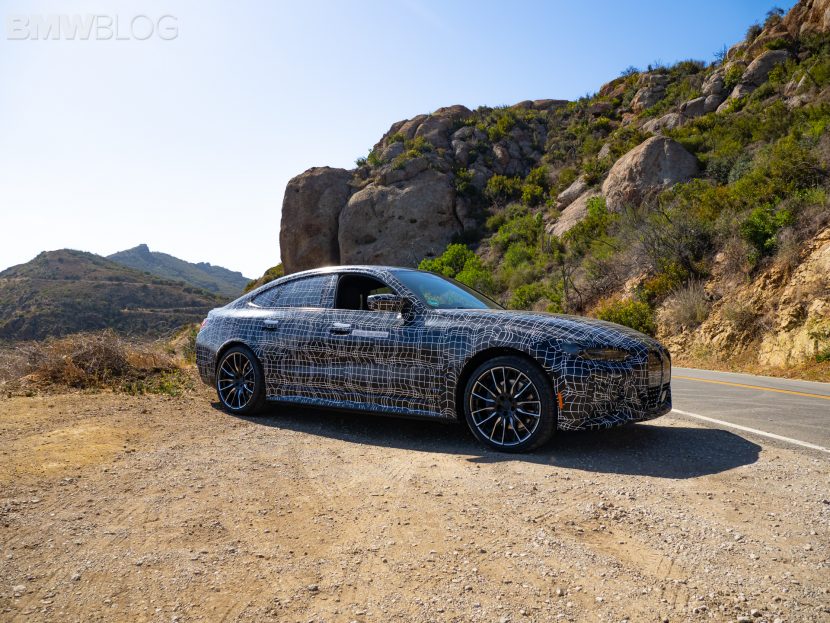
Of course, the Medium setting is the happy ground, especially for drivers who are not used to electric cars. Electric vehicle drives can get nauseous with high energy regeneration modes, hence why the middle setting is a good starting point to ease you in.
Adaptive recuperation is one of the standard settings activated when the driving position D is engaged. The BMW i4 pulls away at minimal speed as soon as the brake pedal is released, a feature that certainly helps with overtaking or stop-and-go traffic. If you still crave the one-pedal feel from the i3, you can shift the gear into position B and you’ll use mostly the acceleration pedal. It is definitely more energy efficient, but it takes time to get used to it.
Electric Driving Range

In a normal test drive, the real life driving range would have been at the top of my list. But this was a pre-production model packing a trunk full of computer equipment for testing and likely not carrying the latest software or other final touches. So any testing of the electric driving range would have been highly inaccurate or skewed. Instead, I focused mostly on the performance of the car and the transition of a driver from conventional cars to electric.
In that respect, the BMW i4 does not disappoint. On the contrary, it offers a well put together package with all the latest and greatest tech from Munich, along with the many lessons learned from the BMW i3. It is a highly performant electric car which still manages to deliver plenty of emotions behind the wheel, despite the lack of engine and exhaust acoustics. Some may argue that the BMW i4 is a few years too late, and it often feels that way, but the electric car market is still in its infancy and the swords are finally coming out.
One thing is certain though: The BMW i4 will be a strong contender in the segment and a future high seller for the Bavarians. Also in my opinion, it is the best BMW product today. That until I get to drive the BMW iX.


